
Editors-in-Chief
Owen Bittinger, Elizabeth Fetter
Jackson Martin, Cameron Toland
Managing Editor
Yasmin Friedrichowitz
Creative Director
Grace Li
Multimedia Director

Oliver Marburg
Head Columnist
JJ Stoen
Online Editor-in-Chief
Ivan Ijzerman
Copy Editor
Grace Gormley
Social Media Manager
Josie Vogel
Photo Editor
Caleb Wong
Staff Writers
Abigail Karel, Amani Elfadil, Ashton Chow
Avery Reller, Aspen Stitt
Beau Revenaugh
Caroline Mostofizadeh, Claire Cho
Jason Hu, Katie Yen
Lily Jeffrey
Sirisha Mitra
Takumi Weiman, Trey Collins, Tyler Frick
Tyler Harrison, Tyler Martin
on the cover:
Volume XVI, Issue 4 April 2023
STAFF
Viking Magazine Palo Alto High School 50 Embarcadero Road Palo Alto, CA 94301 650-329-3837 Email contact: vikingeds@gmail.com Follow us @vikingsportsmag or go to vikingsportsmag.com for current game updates/scores. Viking, a sports magazine published by the students in Palo Alto High School’s Advanced Magazine Journalism class, is an open forum for student expression and the discussion of issues of concern to its readership. Viking is distributed to its readers and the student body at no cost. The staff welcomes letters to the editor, but reserves the right to edit all submissions for length, grammar, potential libel, invasion of privacy and obscenity. Advertising in Viking The staff publishes advertisements with signed contracts providing they are not deemed by the staff inappropriate for the magazine’s audience. For more information about advertising with Viking, please contact Viking by email at vikingeds@gmail.com Printing Services 2,500 copies of Viking are printed, five times a year by Folger Graphics in Hayward, Calif. Logo Font Courtesy of Måns Grebäck The Friedrichowitz Family The Fetter Family The Chow Family Melissa Reller Mollie Stitt The Toland Family would like to thank our sponsors... The Revenaugh Family The Martin Family Kaustav Mitra The Yen Family The Vogel Family The Harrison Family
E-Sports or Exceptional Sports is an organization that provides united classes for kids with and without IDD. Our cover story, “Pioneering Progress” (page 13) brings awareness to members of the athletic community playing with disabilities, a group of athletes who are often overlooked. (cover by Owen Bittinger)
magazine E-mail us at vikingeds@gmail.com Go to vikingsportsmag.com Interested in sponsoring or subscribing?
Viking
Welcome back to our forth and our final issue of Viking. This has certainly been an exciting ride, and we are so grateful for everything we have been able to share with you. After a long and exciting year of sports achievements here at Paly, we can’t wait to bring you one last issue of Viking before our time as editors comes to an end. We are looking forward to handing over the reins to our brilliant new leadership team, as they bring you issue five highlighting Viking’s annual athlete of the year awards.
We feel fortunate to have been able to share four issues celebrating the athletic community and stories we feel passionate about, and hope all of you enjoy issue four as much as we did making it. Within Viking, we strive to represent every athlete at Paly, regardless of gender, sport, race, or ability, and hope to highlight unique stories and skills. Our final
cover story, “Pioneering Progress” (page 13) brings awareness to members of the athletic community playing with disabilities, a group of athletes who are often overlooked. The story highlights both Paralympic and professional athletes with disabilities as well as talented athletes here at Paly, and the difficulties they face on a daily basis.
On a similar note, our second feature story “Saying Bye to Bias” (page 34) dives deep into bias and stereotypes within sports themselves, and the influence on the sport itself booms in and out of the media. As a publication and leadership team, we always think it’s important to talk about gender bias and representa tion in sports and its direct application into our publication.
We want to give a huge thank you to all of you, our readers, for supporting us through the last year and allowing us
STAFF OPINION
to do what we love: write about sports. Without all of you, we would not be able to publish this magazine the way we do. We would also like to shout out the Paly athletic community, for continuously giving us exciting events and accomplishments to keep you all updated on. Finally, we want to thank our publication advisor, Mr. Wilson and all of the Viking staff. We are so grateful for everything all of you do to support us and this magazine would not happen without you.
Well that’s about it, Vikes. Thanks for coming along with us this last year, and as the last two years of EICs have said, “this may be the last chapter of our time as editors, but it’s the first page in a rock-
The World Baseball Classic (WBC) is an international tournament that takes place once every four years. Many base ball fans consider this to be their version of the World Cup as it allows players from all over the world to prove to ev eryone their skills and represent their home countries. This tournament ranges from many different backgrounds. Ranging from multi-time all stars to a starting pitcher whose main source of income was from his job as an electrician.
This tournament has rapidly been growing in popularity in the last decade and is becoming more and more important to players and fans alike. But alongside this growth, there has been multiple mentions, mainly from U.S. coaches and fans, to bring this whole tournament to a close in order to save players for their official regular season in the Spring.



Personally, I think that bringing this tournament to a close is a horrible
idea. Although this tournament may seem irrelevant to a typical USA baseball fan, to other countries, it means a ton more. For example, Puerto Rican catcher, Yadier Molina, stated in an interview that winning this tournament was more important than winning the World Series.
In Asia, the 2006 WBC, was one of the most watched live television events in its history. Proving how much this event meant to their country. But in the USA, this tournament has seemed to fly under the radar because many of the MLB star players choose to not play in the tournament in prior years because they didn’t find it necessary and see it as more of an exhibition match.
But finally in the 2023 WBC tournament, the USA finally put together a powerhouse team and arguably one of the best lineups in the whole tournament. This includes a first time appearance from the three-time American League MVP Mike
ent, the USA took down both Venezuela and Cuba to advance to the championship where they fell short to the powerhouse Japanese team led by MLB superstar Shohei Ohtani. Despite this loss, this year’s tournament has proven to be moving in the right direction. Players from all countries are enjoying the experience a lot more each year.
In conclusion, the World Baseball Classic has proven to be a worldwide entertainment and has shown signs of growth throughout multiple nations. The continuation of this tournament will bring more attention to the sport of baseball and the tournament overall.
World Baseball Classic -Viking
-

@vikingsportsmag | APRIL 2023 | 3 Letter from the EDITORS
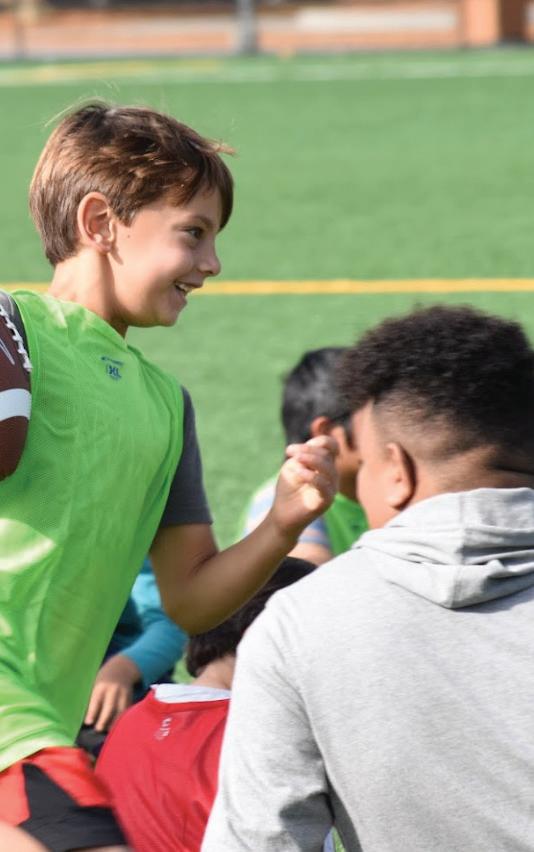

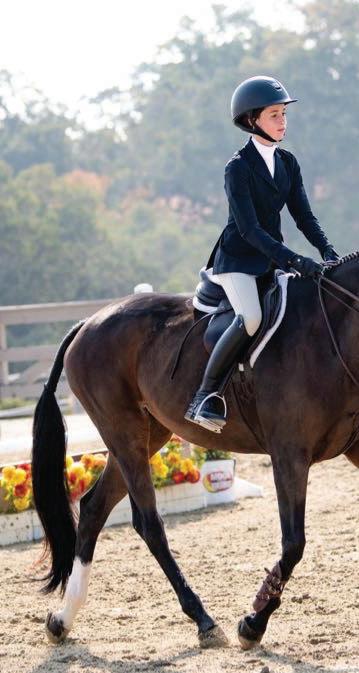

4 | VIKING MAGAZINE | vikingsportsmag.com 13 41 34
CONTENTS
06
ZOOMS
Photos from Paly sports this spring season. Featured is our boys golf, girls lacrosse, and boys volleyball teams.
13
PIONEERING PROGRESS
Millions of athletes around the world have disabilities, and their accomplishments are often overshadowed. It’s time to highlight these skilled athletes and celebrate everything they add to the greater athletic community.
20
ARCHERY
From Apollo to Arjuna, archery has been ingrained in society’s stories and culture since ancient times. Explore how archery has changed over the years and what the sport looks like today.
25
FORMULA 1
In this article we not only break down the sport of F1 for fans both new and old, but also provide an analysis of F1’s sustainability strategy

28
THE VOICES OF SPORTS
In this story, we take a dive into what exactly sports commentary is, its interesting history, the different forms of commentating, and the unseen effort that goes into creating the dynamic experience of sports entertainment.
32
MASCOT MATCHUP
In this story, we explore the rivalries between major teams and ask Paly students about their thoughts on the mascots for each team.
34
SAYING BYE TO BIAS
Gender bias and inclusion in sports has improved tremendously over the years. Yet, it still is a major issue seen throughout sports at every level including here at Paly.
38
VIKING TRIES
Viking members Yasmin Friedrichowitz and Beau Revenaugh try to ride a unicycle for the first time with the help of Nathaniel Grinkrug.
41
HOLD YOUR HORSES
A deeper dive into the unique aspects of the sport of horseback riding through the eyes of three of Paly’s own equestrians.
44
GAME DAY DRESS UP
As Vikings, we display our spirit in every way possible; some teams choose to participate in dress up days to get hyped for their games. Here’s a look at some of the best game day dress ups. 25
@vikingsportsmag | APRIL 2023 | 5 TABLE OF
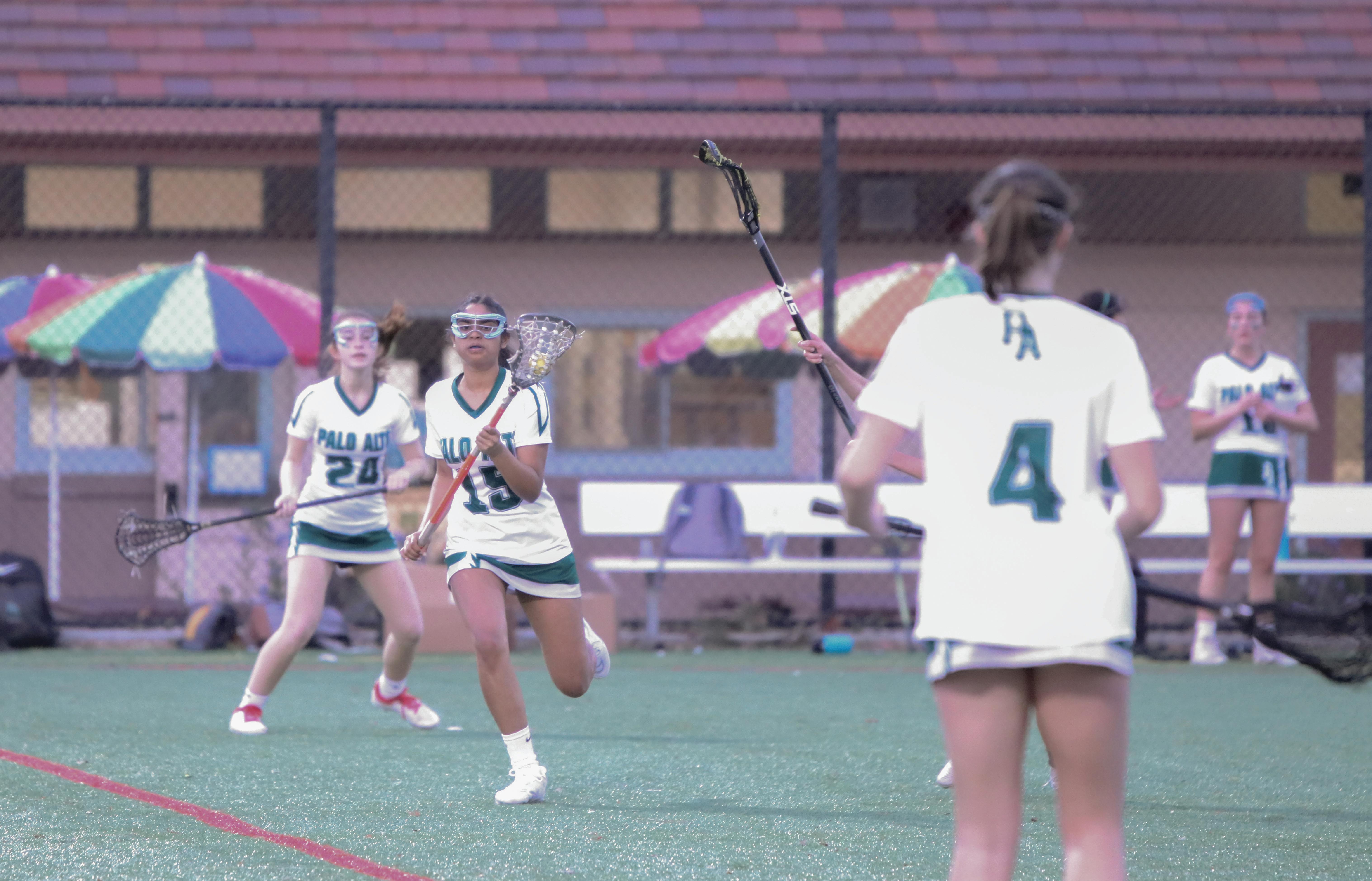
MOVING IT
AROUND
Paly girls lacrosse lost to MenloAtherton 19-3. “The score wasn’t ideal but our team really kept up the energy,” Gabby Loops (‘24) said. “I think this team has a lot of potential and I’m excited for the rest of the season.”
Pictured: Shaivi Sanchorawala (‘23) looks to move the ball to a teammate.
 Photo by Amani Elfadil
Photo by Amani Elfadil
 Photo by Caleb Wong
Photo by Caleb Wong
SETTING
IT UP
Paly boys volleyball defeated Gunn 3-1, completing a gentleman’s sweep. “It was a tough game,” Julian Hong (‘25) said. “We were missing starters but I’m proud of how we fought tonight.” Pictured: Calvin Wong (‘23) sets the ball up for his spikers to hit.


FULL
SWING!
Paly boys golf narrowly defeated Los Altos, 189-202. “I was really happy on how we played against Los Altos,” Julian Galindo (‘23) said. “We shot some low scores that match so it’s a great confidence booster for the rest of the season.”
Pictured: Grady McCarter (‘25) tees off at the Baylands fifth hole.
 Photo by Caleb Wong
Photo by Caleb Wong
10 Questions 10 Questions
WiTH GRANT MORGENFELD
20% 20%
How well do Grant’s teammates, friends, and coaches know him?
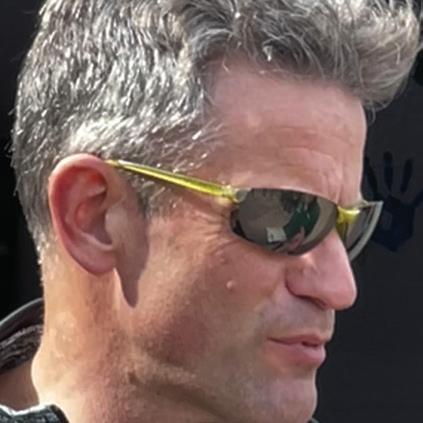


1. 2. 3. 4. 5. 6. 7. 8. 9. 10.
Q: Favorite person to race against A: Ayden Stefanopoulos
Q: Funniest Teammate A: Mateo Fesslmeier

Q: Favorite class A: APUSH
Q: Favorite Pro-Athlete A: Steve Prefontaine
Q: Hidden talent A: Running
Q: Post-game meal A: Chocolate Milk
Q: Favorite Shoe A: Brooks Ghost 15
Q: Favorite XC Course A: Crystal Springs
Q: Favorite Track A: Paly

Q: Favorite sport besides running A: Soccer
Playing guitar
Chocolate Milk
Brooks Ghost 14
Doesn’t have any Ham Sandwich Brooks Ghost 15
12 | VIKING MAGAZINE | vikingsportsmag.com
Eoin O’Connell Teammate
Tony McKenna Friend Casper Vromen Coach
✅Justin Petrie Kyle Park APUSH Jakob Ingrebrigtsen
Woodward Park The Armory Football
Ayden Stefanopoulos
Zachary Spain APUSH Prefontaine
Woodbridge Hayward Field Soccer
Ayden Stefanopoulos
Zachary
Spain
Band Riding Pasta Nike Vaporflys
Balboa Park Fresno Stadium Soccer Jakob Ingrebrigtsen 50%
by GRACE GORMLEY and ASPEN STITT
Millions of athletes around the world have disabilities, and their accomplishments are often overshadowed. It’s time to highlight these skilled athletes and celebrate everything they add to the greater athletic community.

 E-Sports athletes cheer after a practice.
Photo courtesy of Stephanie Koo.
E-Sports athletes cheer after a practice.
Photo courtesy of Stephanie Koo.
Two weeks before Mauricio Porcayo’s graduation from Bassett High School in Avocado Heights in Southern California, he was hit by a drunk driver. Doctors were able to save Porcayo’s right leg, but his left had to be amputated below the knee. For a while after this horrible accident, Porcayo anguished that he would never be able to play soccer again, which had been his passion from a young age.
“I was at my lowest point,” Porcayo said. “Hearing the news that you’re going to get your leg amputated, you believe that’s it: there’s no more chance of you be[ing] an athlete.”
But despite these fears of never being able to participate again, Porcayo would find another opportunity to play: in the sport of amputee soccer.
“When the coaches came out from the United States Amputee Team to let me know that there’s still soccer even after amputation, it really lifted up my hopes and happiness,” he said.
In the same way that soccer is an integral part of Porcayo’s life, athletics inhabit a fundamental role in the happiness of billions of others worldwide. Elite athletes are hailed as heroes and celebrities across the globe, and their incredible accomplishments become legends to their adoring fans.
But time and time again, a group of athletes is overlooked, not given opportunities, or passed over by media and fans alike. Disabled individuals suffer from a fundamental lack of appreciation and lauding for their athletic accomplishments, especially by the mainstream press.
According to the World Health Organization, one in six people worldwide experience a significant disability -- whether from an accident, like Porcayo, or from birth. Millions of these people are athletes.
Having a disability often means having to work harder to advance in one’s area of expertise compared to others who are
able-bodied. Many of the accomplishments of athletes with disabilities are overshadowed both in and out of media in favor of giving attention to their able bodied competitors. Thus, it’s time to shine a light on the incredible accomplishments these elite athletes have achieved, discuss the ways they must adapt in order to play their sports, and share ideas on how to increase awareness and accessibility.
Porcayo’s love of soccer is shared by Nico Calabria, the 12-year captain of the United States Amputee Soccer Team. He was born with only his left leg, and has been playing amputee soccer on the world stage since he was 16. At only 13, he raised over 100,000 dollars for charity when he climbed Mt. Kilimanjaro, a volcano in Tanzania that is roughly 20,000 ft high. He first began playing soccer from a young age.
passion for bringing amputee soccer to others, like Porcayo.

“When [amputees] have an opportunity to play again, ... it’s a truly electrifying experience,” Calabria said. “That’s really what it’s all about: just making sure that anyone who wants to play is able to and has the resources to do so.”
Calabria first began playing in international amputee soccer matches when he was 16, but at that time, there were few opportunities for him to compete.
athletes
“I just love soccer,” Calabria said. “I played with my friends. [I knew] this is what I want to be doing. … It definitely helped me build community and it also prepared me to be one of the best amputee soccer players in the world.”
His assertion of “best in the world” is no exaggeration. Calabria is the all-time leading goal scorer for the USA and was a Golden Boot runner up in the 2022 Amputee World Cup, meaning he was the second highest scorer in the entire tournament.
Beyond his immense skill in the sport, Calabria has a
“Originally, it was actually quite frustrating because there wasn’t a program really going in the United States,” Calabria said. “You had to pay to play, [games] were few and far between. They were very spread out geographically and it didn’t really feel like there was much momentum building.”
Because of this, Calabria worked to advocate for the sports growth and recently, amputee soccer has started gaining momentum in the US.
“In the last four or five years, I’ve really dedicated a lot more time to it and the organization [of USA Amputee Soccer] has grown to the point where we can support athletes’ costs to play, and there’s just more regular competi-
USA Amputee Soccer Scan for info on how to get involved


One in six people worldwide experience a significant disability... millions of these people are
14 | VIKING MAGAZINE | vikingsportsmag.com
An E-Sports class. Photo courtesy of Stephanie Koo.
tion going on,” he said.
Currently, he is in the process of founding a team in Los Angeles, where Porcayo is a player.
“Having access to the sport is amazing,” Porcayo said. “But there still are … a lot of amputees that don’t know about the sport, and [raising awareness is] what we’re trying to do.”
Awareness is hugely important in helping people with disabilities increase access to athletics. Many aren’t aware of organizations near them and therefore are denied these opportunities to participate.

The biggest event for athletes with disabilities is the Paralympic Games, which helps to raise awareness and promote inclusivity for all athletes. The Paralympic Games are the Olympic Games competition for athletes with disabilities.
They are held in tandem with the Olympic games, and in recent years, viewership of the games has increased. According to news service Freshered, the Rio 2016 Paralympic Games counted about 4.1 billion viewers globally, a significant increase from London 2012, which counted 3.8 billion. This is great news, as the showcase of the skills of these elite
ty does not fit into one of the other categories, including people of short stature).
Many of the aforementioned categories are for athletes with physical disabilities, like the soccer players Porcayo and Calabria.

Swedish golfer Joakim Björkman is another great example of a remarkable athlete with a physical disability. He holds a career-high ranking of third in the world for golfers with disabilities, and is winner of 35 worldwide titles for golfers with disabilities, including (but not limited to) Swedish Champion in 2016, four-time Italian Open Champion, and European Champion 2006.
BORP
Volunteering and Donation Info

do on the course.”
As soon as he began playing golf around age 11, he signed up for a golf school and then quickly advanced in skill. In golf, all players measure their ability with a number called a handicap. The lower the handicap, the better the player.
Björkman’s first official handicap was a 54, and only four months later he was down to a 15.
Nico Calabria
“Starting in that school, … I knew it was this kind of sport that I was supposed to do,” he said.
Despite this success, his journey to-
Björkman plays in both golf tournaments for those with disabilities and also ‘normal’ ability golf tournaments, in a ratio of about one-to-one. Playing in the more mainstream tournaments makes a big difference in awareness and accessi-
“Competing in the biggest stage and … the biggest tournaments is when you create more exposure, in a good way,” he
Björkman sees that it makes waves and helps to change people’s per-
“I compete on that stage, and it’s like you’re shaking up the world and [people see] ‘whoa, you can do something big,’” he said. With the impact golf has made on his life, Björkman encourages others with disabilities to try a sport, even if they feel trepidation.
“Because everyone will be feeling fearful, nervous, unsure,” he said. “Actually, that’s the first sign that you are ready. You have to accept that and when you do…
“When [amputees] have an opportunity to play again, ... it’s a truly electrifying experience.”
Nico Calabria shoots the ball.
@vikingsportsmag | APRIL 2023 | 15
Photo courtesy of Matthew Stone.
you start to see what you’re capable of.”
Like Björkman said, it can be intimidating to start a new sport, whether you have a disability or not. But here in the Bay Area, there are organizations dedicated to helping athletes with physical disabilities start a sport.
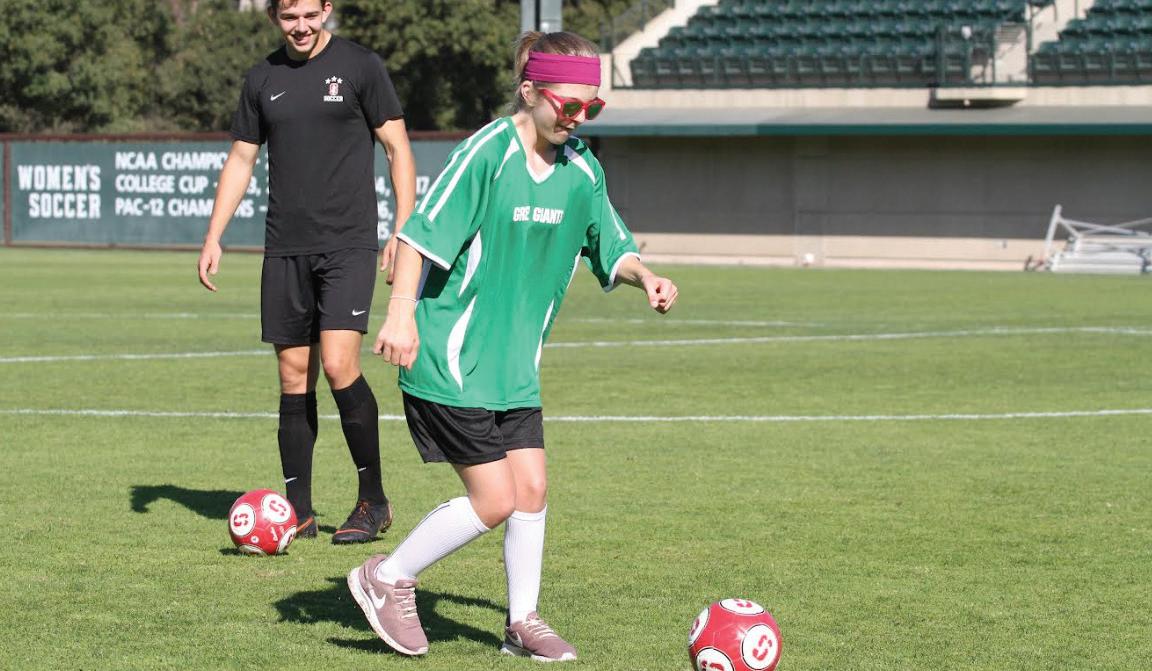
The Bay Area Outreach and Recreation Program (BORP) is one such organization. BORP works to create a supportive, fun and active community for adults and youth with physical disabilities and visual impairments.

BORP offers a variety of team activities and sports for adults and kids. Some of these include: wheelchair basketball, sled hockey, goalball, power soccer, adaptive cycling and other outdoor activities. The goal of these programs is to allow kids the opportunity for fun and competitive interactions while also learning new skills and making friends.
Sled hockey and youth basketball coach Trooper Johnson shares his experience with BORP and its mission.
“What we try to do is provide oppor-
struct programs that normally aren’t offered to them in kind of the general population or general communities that they’re in.”
E-Sports Volunteering Info

BORP allows for kids and adults to socialize with others with common interests. These competitive sports, adventurous outings and aerobic exercises allow participants to feel safe and showcase their interests and talents in a positive way.
BORP aims to provide a community to alleviate stress as well. Just like Björkman described, many kids with disabilities face discrimination from society, which can cause anxiety and isolation. Sports can provide the same escape for them as it did for Björkman.
“I think that community is probably more important for kids with disabilities,” BORP coach Johnson said. “They’re kind of isolated in a lot of cases. They go through a lot of stuff that a lot of people just don’t really understand.”
more.
In the Paralympics, it is challenging to earn a spot in the IDD categories because there are fewer sporting events open to them. In the Tokyo 2020 games, there were only three sports available for athletes with IDD: swimming, table tennis and athletics (which includes track and field events and road running events). Worse still, the Beijing 2022 winter games did not have any events for athletes with IDD at all.
Some athletes and their families are standing up against this lack of inclusion. Mikel Garcia, a Spanish runner with Down syndrome, was declared World Champion in 400m, 800m and 1500m at a competition in Brisbane, Australia in 2019. Garcia’s parents set up a petition asking for more inclusion at the Paralympics, which received more than 100,000 signatures.
Despite people with IDD having few opportunities to perform at the Paralympics, more and more people with IDD are getting involved with sports everyday.
One organization helping to introduce people with IDD to athletics is E-Sports. No, not online gaming, E-Sports stands for “Exceptional Sports” and provides united classes and programs for kids both with and without IDD all over the Bay Area.
One E-Sports employee, Stephanie Koo, shared the goal of the organization.

“Our mission is that inclusion is more than in the classroom, it’s a lifestyle,” Koo said. “Inclusion … is something that can go beyond the classroom and to things that people love, whether it’s a hobby, or a life skill or just sports in general. But it’s about creating this friendship and bond between kids with typical needs and with special needs.”
E-Sports leads classes for kids and adults, both with and without IDD.
“It’s a lot of fun,” she said. “It’s a lot of high energy as well.”
It’s not always easy, but E-Sports makes sure to give each person individual attention.
“The mindset [should] not be ‘oh I can’t so I won’t.’ It’s more like, ‘how can I?’”
Stephanie Koo
McQuarrie ‘24
“Sometimes there are kids that have a harder time with the activity, whether it’s that they’re just not feeling it that day or there’s something that’s over-sensory to them,” Koo said. ”We have a one-on-one volunteer coach that will take their time to sit aside with them and either play soccer or do some sort of a oneon-one drill with them -- whatever they feel comfortable with -but getting to their level of their comfort.”
Koo feels that many kids with IDD don’t get the chance to participate in sports because they feel excluded.
“There’s a lot of times in neighborhoods or communities or other schools where a student who is not neurotypical will kind of get turned away, [and think] ‘I can’t join this activity or that sport because don’t fit in, I don’t belong. Or I
can’t,’” she said. She believes that the best way to increase accessibility is with adaptation to the needs of different people.
“We should be finding ways to make something adaptable,” she said. “For a girl that I was working with, who had cerebral palsy [and was in a wheelchair], we went more towards an area that was more paved, rather than on grass…. The mindset [should] not be ‘oh, I can’t, so I won’t.’ It’s more like, ‘how can I? Let’s see if we can make this work.’ [It’s about] not being afraid to fail or try things that may not be status quo.”
The Paly community prides itself on our athletics. Our athletics program is a big

part of our school, and many of our athletes also compete in sports outside of school. In addition, we also have athletes with IDD. Known as the Futures, there are two classes of students with (IDD) who are active members of our Paly community. These students are often seen on campus cheering at pep rallies, greeting friends on the quad and, of course, playing sports.
Through the AYSO VIP program, kids with IDD from Paly and all over the Bay Area, can play on the Green Giants soccer team. The team provides exercise, socialization and fun for people with IDD from kindergarten through college and beyond.
Paly’s own Maia McQuarrie has been a player on the Green Giants for five years, and she discussed the impact it has had on her life.

“Sometimes it can be tough,” she said.
Green Giants Soccer Team
Volunteering Info

“Sometimes [soccer] can be tough, but sometimes it’s awesome.”
Maia
“It’s about letting people who are in mainstream athletics know that this world exists. ” Malcolm Fleschner
@vikingsportsmag | APRIL 2023 | 17
Maia McQuarrie ‘24 winds up for a pass. Photo courtesy of Malcolm Fleschner
Joakim Björkman
“But sometimes it’s awesome and pleasant and amazing. I love seeing my friends even when practice can be hard and you can be tired after your training.”
McQuarrie is a leader on her team, helping to bring confidence to players who are having trou ble.
“I’ll say, ‘I’d be happy to help you know what to do if you’re nervous, or not sure if you want to do [soccer] anymore,’” McQuarrie said.

Her dad, David McQuarrie, is also a coach on the Green Giants, and commented on Maia’s atti tude towards the game.
“She scores goals pretty often,” he said. ”[She has] the biggest smile and jumps in the air with excitement, having scored.”
He notes on the importance of the sport to Maia, especially when she first started playing five years ago.
“[Maia was] just over the moon at being able to run and score goals and play with her friends,” he said.
One of the other coaches of the Green Giants, Malcolm Fleschner, spoke on the importance of soccer, and sports generally, to kids with IDD.
“Once you get that experience of dribbling a ball and scoring a goal, ... you can see the enthu siasm,” Fleschner said. “And then some of these kids who were the most reluctant at the start then become the most enthusiastic, and that is always
Joakim Björkman

“I compete on that stage, and it’s like you’re and [people see] ‘whoa, you can do something big.’”
18 | VIKING MAGAZINE | vikingsportsmag.com
McQuarrie, one of the players, loves meeting new volunteers.
“[I feel] excited, proud and happy that they’re gonna do the Green Giants with
One of the biggest traditions for the Green Giants soccer team is their annual match against the Stanford Men’s soccer
“The coach of the Stanford men’s team, Jeremy Gunn, is very open and welcoming,” Fleschner said. “And the players are terrific and they just do a great job.”
The Green Giants have been undefeated against Stanford for ten years running.
“Yeah, sometimes it comes down to penalties,” Fleschner admitted. “But it’s been good for [Stanford] because on three separate occasions, we beat them, and then they went on to win the NCAA championship, so [losing to the Green Giants] was a good warm up for that. Maybe a little wake up call for them.” But these victories are bigger than just a win. It is also about spreading
“We really appreciate playing with the Stanford men’s team because it’s not just about humiliating them,” Fleschner said. “That’s like 70% of it.” He laughs. “No, it’s about letting people who are in mainstream athletics know that this world ex-
Fleschner believes that once more people are aware of athletes with IDD, more people will become in-
“How well people are aware of the sporting world and special needs community is probably generally pretty low,” he said. “So once they become aware of it, they may want to participate as volunteers or help out in any way. I think that just becoming more informed is helpful.”
Most athletes and coaches agree that raising awareness is a big deal to increase inclusion.
Porcayo feels that exposing sports fans to the achievements of athletes with disabilities is a great way to raise awareness. One victory in this sense was the winner of the Puska Award for Best Goal of the year at Fifa’s awards this year. Marcin Olesky, a Polish ampu-
tee soccer player, beat competitors like Kylian Mbappé and Dimitri Payet for the final title of Best Goal of the year.
“Having that [title] shows abled people and disabled people that anything is possible,” Porcayo said.
Not only to Porcayo, but also to Calabria, awareness is crucial to growing the sport and appreciation of it.
“Awareness and advocacy goes a long way for building on the grassroots level,” Calabria said.
Perhaps due to his masters degree in education and history as a teacher, Calabria understands the power of education and believes utilizing it for accessibility can make a big difference.
“It ultimately comes down to education and advocacy,” he said. “Every gym teacher, in my opinion, should learn about adaptive sports. … Then, when a coach finds a kid who has a disability… there’s a lot of different sports available to them. It’s about being able to provide the resources and knowledge so that that person can get involved with the programs that are around.”
He also believes in getting people without disabilities involved in the sport as well.
“It helps to make sure that others know about it,” he said. “It helps to grow awareness of the sport and appreciation for the athleticism and the competition.”
Koo of E-Sports also notes from personal experience that volunteering with organizations like E-Sports helps to gain an appreciation in the volun-
teer as well.
“[Volunteering] definitely opened up my eyes that there’s another world that I was not aware of,” she said.
Similarly, Porcayo felt a weight lifted from his shoulders when he met other players that were like him.
“It’s something very nice because you feel like you’re not alone anymore,” he said. “You understand how there’s still possibilities of other things that you can do. Whether you have two legs or you don’t.”
There are so many ways to support athletes with disabilities, and one of the best ways is to volunteer, like what both Koo of E-Sports and Fleschner of the Green Giants talked about. See the infographic in this story to find ways to get involved. This makes a big difference in the lives of the athletes.

Above all, the world needs to begin to appreciate the accomplishments of athletes with disabilities and help to spread awareness, so that more people with disabilities can find a way to bring sports into their lives.
Sports are one of the most important forms of human interaction, with camaraderie and competition. They should be spread to as many people as possible. All of the people in this article, relentlessly pursuing this end goal of inclusion and accessibility, are changing the world for the better by helping us all play.

“It ultimately comes down to education and awareness. ”
Nico Calabria
@vikingsportsmag | APRIL 2023 | 19
E-Sport’s E-Karate Class. Photo courtesy of Stephanie Koo.
ARCHERY: ARCHERY: ARCHERY:
NOT YOUR STANDARD NOT YOUR STANDARD NOT YOUR STANDARD ARCHERY: NOT YOUR STANDARD
From Apollo to Arjuna, archery has been ingrained in society’s stories and culture since ancient times. Explore how archery has
Cthe bow and arrow have, in some ways, become a mythical weapon akin to Zeus’ lightning bolts. But archery has not al ways been glamorous, nor is it so whim sical. Archery was a valuable hunting method for thousands of years, and even today, the sport persists among scores of people. But what does archery look like nowadays, and how has it changed over the years?
Used as a hunting method since an cient times, the first example of archery as a sport dates back to 1583, and the sport is still played today, despite the
ry than others. Furthermore, the recurve bow’s simplistic mechanics allow for easy

Within Paly, sophomore Sera Zhang (‘25) is among the few archers shooting competitively. Zhang started archery two
After almost a year of shooting at Stevens Creek and Palomo Archery, Zhang decided to start competing. She has traveled across the state to numerous competitions, from the short indoor season (January to February) to the much longer outdoor season (June to December).
“It’s an activity that requires no close contact, which came in useful,” Zhang said. “I got introduced by my mom, we used to live close to an outdoor archery
20 | VIKING MAGAZINE | vikingsportsmag.com
range, and she wanted to try it out, so I tagged along.”
Within archery, there are numerous types of bows, all with different purposes. Compound bows are designed for maximum efficiency and power. This bow requires a system of pulleys and cables, meaning that less physical strength is needed from the archer, and it is easier to draw this bow up when compared to others.
Archers can use mechanical release aids, making the compound more accurate from larger distances than other bows. This bow’s most significant advantage is its accuracy and power from a greater distance from the target. This bow also has more customizations and add-ons, requiring less upper-body strength. Despite recurve being the only bow used in the Olympics, there have been proposals to add compound bows to the 2028 games.
A third common bow is a longbow. The Antigua version of the recurve bow, longbows, are made from wood and lack modern stabilizers and add-ons/ accessories. Longbows are not notably recurved, and their limbs are proportionally narrow and circular or D-shaped in
the cross-section. These bows date back to the paleolithic era, as they were used for hunting and warfare.

Often, people begin shooting with a barebow, a basic version of the recurve bow with no accessories, which helps archers focus more on consistency and perfecting aim due to its simplicity. It is traditionally used in field archery but has recently been implemented in target archery.
Field and target archery is based on the same concept, hitting the target as accurately as possible. However, field archery requires archers to shoot in rough terrain and heavier wind conditions and is
meant to represent real-world situations. Target archery, on the other hand, is conducted under more controlled conditions and settings.
Zhang shoots the longbow, which is not classified as an archery discipline for competition, so she shoots within the barebow division.
“There is a style difference although both disciplines have no sight or stabilizer, (as you would see on an Olympic Recurve) longbows are typically made out of wood and one piece, while most people who shoot barebow have a metal recurve,” Zhang said.
Archery culture is very diverse because each discipline has its own community.
1. Hitting the inner yellow circle will reward you with ten points for a bullseye
2. Each circle going out from the middle yellow ciircle will decrease by one point.
TARGET BREAKDOWN TARGET BREAKDOWN TARGET BREAKDOWN TARGET BREAKDOWN “
“ 10 9 8 7 6 5 4 3 2 1
I think the different styles are sort of like branches into different views and cultures but the overall foundation is still the same Sera Zhang
From recurve to compound, a different population profile performs with each bow.
“I think the different styles are sort of like branches into different views and cultures, but the overall foundation is still the same,” Zhang said. “There is something everyone can benefit from by getting to know all the disciplines, even if you don’t shoot that. For example, barebow and compound might be really different, but both can benefit by learning from one another.”
With the many variations in mind, the United States Archery Association (USAA) has sought to implement rules and regulations regarding equipment use and requirements. There is a main emphasis on the rules of equipment in archery, and breaking said rules could
lead to severe competitive disadvantages for the perpetrator. Beyond bow use, a main subset of the regulation is devoted to the competition dress code. Like most other sports, archery has a dress code built into its rules. Unlike most sports, the dress code in archery is essential to safety and survival rather than just for athletic advantage. To compete, an individual must be in “professional athletic apparel.” Ripped, torn, or dirty clothes, shorts, skirts, or shoes that do not cover the entire foot are prohibited. Leggings and other tight-fitting pants are often worn, and upper garments must have long sleeves and full coverage of the front and back of the body. Closedtoed shoes are essential unless an archer is experiencing an injury or disability and has been approved by the USAA to do otherwise. These rules help avoid injury as they eliminate unnecessary exposure to injury.
Beyond proper dress codes, various “range” regulations are put in place to ensure the safety of the athletes. Some basic rules include keeping arrows always pointed down and maintaining a safe space between yourself and others. You must never cross into their shooting lanes with any part of your body or shoot
in any other lane besides yours. Finally, always pay attention to your surroundings, especially when moving around the shooting range, and always walk on the range, don’t run!
Competitors’ arrows must match the shaft (the body of the arrow) and fletchings (part of the shaft that stabilizes the shaft by causing it to spin in the air). Arrows must be marked with the archer’s initials in the same place on each shaft for identification purposes. In USA archery events, the arrow can’t exceed 9.3 mm in diameter, and the arrow tips cannot exceed 9.4mm.

When you are shooting, always place one foot on each side of the shooting line when shooting. Once all arrows have been released, step away from the shooting line and place your bow back on the rack while you wait. It is important that once everyone has completed the round, ask “clear?” to guarantee it is safe to retrieve the arrows. It is crucial to know and obey the rules of the range when participating in archery, along with inspecting all equipment before shooting. Archers are usually divided into two groups, A group and B group, for competitions. Archers in the A group step up to the shooting line after hearing two
WHICH BOW WHICH BOW WHICH BOW WHICH BOW


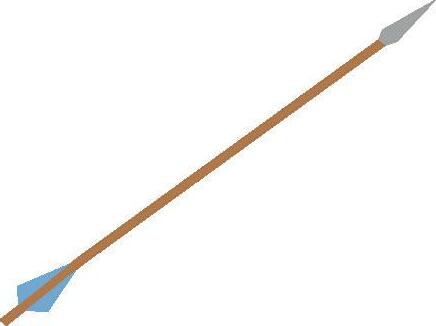






START HERE START HERE
Beginner Expert
22 | VIKING MAGAZINE | vikingsportsmag.com
whistles. They then load their arrow and wait for one whistle before shooting their arrows during the time period. Once finished, they wait behind the waiting line, and two whistles occur again, prompting group B to advance to the shooting line. As all archers finish shooting, three whistles occur, signaling walking into the range and collecting their arrows is safe.
As for competition rules, target archery uses red, yellow, blue, black, and white circles on its targets. Each color is designated to a different score. The target scores ten points for the inner ring and only one point for the outer rings. Each color has 2 circles, the inner ones result in 1 more point than the outer ones. Hitting the inner yellow circle will reward you with ten points; each circle going out after that is one less point.
After all, archers are done shooting, and it is safe to walk down range; archers score their shots after each end. Removing or touching the arrows in the target is prohibited until they are officially scored. The arrows are scored based on the position of the shaft in the target face. If the arrow is between two colors or dividing lines, the arrow gets the higher value. Two scores are assigned to each target, and they enter the range to check the value of each arrow. A judge decides if there remains a disagreement between the archers and the scorers.
Archers can score a maximum of 30 points for three arrows in each set. The











archer with the highest score earns two set points, and a tie earns both archers one set point. The first archer to earn six set points wins and can move to the next round.
The Bay Area has been an epicenter of athletic archery for decades. Numerous clubs and ranges have popped up all along the Bay.
Close to home, Palomo Archery has remained the only indoor archery range in Palo Alto. It was started by Peter Palomo, a Certified National Field Archery Association instructor (NFAA) with over 35 years of experience.
Palomo ensures that his range is open to archers of any level, both a place for everyday training to learning how to hold a bow for the first time.
There is a plethora of bow and arrow maintenance tools. Since archery is an equipment-heavy sport, equipment upkeep is very important.
Archery is one of the most unique sports with an intriguing history. As we begin seeing major changes at the Olympic level, archery as a sport will continue to evolve and change, as it has done since the first arrow was fired.
IS FOR YOU? IS FOR YOU? IS FOR YOU? IS FOR YOU?
Hunting Recreational LONGBOW COMPOUND BAREBOW RECURVE “
“
There is something everyone can benefit from by getting to know all the [different bows], even if you don’t shoot [it]
Sera Zhang






24 | VIKING MAGAZINE | vikingsportsmag.com
 by IVAN IJZERMAN
by IVAN IJZERMAN
lthough not as popular as the Indy 500 or NASCAR here in the states, Formula 1 is one of the largest and most popular sports in the world. We are sure many of you may not have the slightest clue what Formula 1 is, so we at Viking will explain.
To compare Formula 1 to a more simple sport, think of it at a track race except in cars that can move up to 400 kilometers per hour, or roughly 250 miles per hour, which generate G-Force equivalent to the planes of stunt flyers. Within Formula 1, there are 10 teams, each with two racers. Known as the best 20 racers on the planet, Formula 1 drivers are at the pinnacle of speed and skill, and work with the world’s greatest engineers to create the most technologically advanced cars in history. Races are held all around the world, including both historical circuits and some brand-new, never-driven-before tracks. Races last about 90 minutes, each lap averaging about a minute and a half. Each track is different so lap times and strategies are always changing from circuit to circuit.
The 2023 Formula 1 season consists of 23 races, each race granting points to the drivers who finish in the top ten. Points are awarded as follows: 25 points to the winner, 18 points to the second-place finisher, 15 points to the third-place, and all the way to the 10th who is awarded one point. Another point is awarded to the driver with the fastest lap, but only if they finish in the top 10.

Formula 1 is as much or even more a team sport as an individual sport. In the sport, it is equally or arguably even more important to place well in the individual championship with points won during the season as it is for your team to place well.
The last decade has been dominated by Mercedes driver Lewis Hamilton, winning the championship from 2014-2020
Awith the exception of 2016 when his teammate Nico Rosberg won 2016. His run, however, has been halted by a new star, who emerged in 2016 for Red Bulls racing team. The Dutch driver Max Verstappen has finished on top the last two seasons and is continuing his reign into the 2023 season winning the first race in Bahrain. You can also guess that during Hamilton’s reign, his team was leading the constructor’s championship, and you would be right, as they won from 2014 to 2021. Only recently has there been a different team winning the constructors championship, that being Red Bull Racing in 2022.
“I think the title fight will be between Red Bull and Aston Martin this year,” Max Schrage (‘23) said. “I would not be surprised if Max Verstappen were to win his third championship this year.”
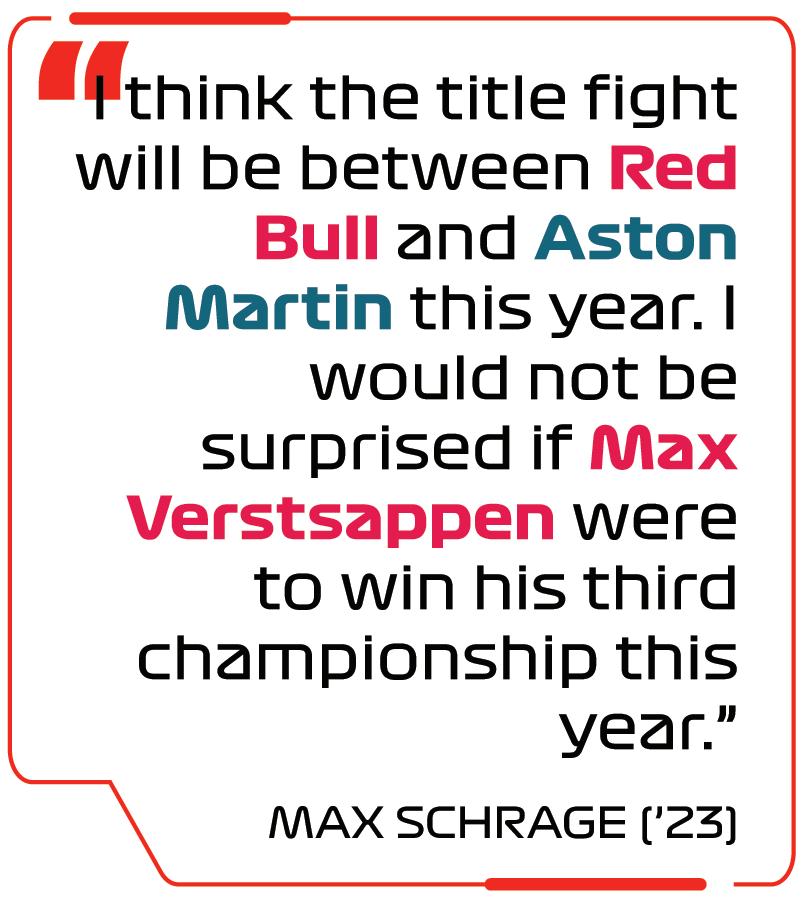
Unfortunately, many of the international Formula 1 races are early in the morning due to the time shift. You can watch on ESPN here in the US, or you can buy F1TV for $10 a month or $80 for a whole season. This grants you access to driver cams, live timing results, and even listening to the team radios. Whether you are looking to become a Formula 1 casual or a diehard Haas fan, The F1TV package is well worth the money as it gives you countless features to elevate your experience watching Formula 1, and would definitely make it a lot easier to understand if you’re just getting into it.
The races themselves are hard to grasp as newcomers, so here is an oversimplification of what a typical Formula 1 race looks like.
QUALIFYING
Qualifying starts with an 18-minute Q1, where drivers are not racing against each other, but rather against the clock. There are no placements, just times, and at the end of the 18 minutes the bottom five drivers with the slowest times are elim-
inated. The bottom five placements are then solidified. Qualifying then goes into Q2, which is 15 minutes long and does the same as Q1 except with places 1115. A Q3 is then raced which is 12 minutes long and will determine the starting 10 of the grid. The driver with the fastest time gets placed at the front of the grid, in what is known as the pole position. This would mean the driver would have to drive a top 15 lap, a top 10 lap time, then finish first in Q3 to win the race. There are no points in qualifying, but a strong starting position is essential for a driver’s performance in the actual race.
SPRINT RACE
In the rarity that there is a sprint race before the actual race, qualifying only determines the sprint start, and the results of the sprint race determine the start of the actual race. The sprint is raced on the same track as the race is held but will be much shorter with about a third of the laps. This means drivers take more risk, and unlike a typical race, there are no scheduled pit stops. 8 points are awarded to the winner of the sprint, with each place getting one point less than the previous place.
RACE DAY
You never want to miss David Croft’s iconic line, “Lights out and away we go,” at the beginning of each race, as the start is usually the most eventful and exciting part of the race. With all drivers lined up in two tight columns of 10 when the lights go out, there is usually a lot of action. With 10 rows of cars going head to head, there are intense overtakes, cars going bumper to bumper to fight for positions, and even the occasional multicar crash. The race lasts up to two hours, either finishing at the two-hour mark or if they reach the max threshold of laps, which is typically in the 50 to 70 lap range. Each race is packed with endless amounts of risk-taking and calculating, which will surely keep you on the edge of your seat. Of course, you need to watch the end of the race, which can be packed with the closest matchups––take the Abu Dhabi Grand Prix ending for example.
2023
SEASON PREVIEW
26 | VIKING MAGAZINE | vikingsportsmag.com
FORMULA 1 SUSTAINABILITY STRATEGY R
ecently, in 2019, Formula 1 vowed to be completely reliant on renewable energy in the year 2030, with the goal of having a net zero environmental impact. Apart from popular belief, only 0.7% of the emissions that Formula 1 produces come directly from the emissions the cars produce. Many bash the International Automobile Federation (FIA), the federation which oversees Formula 1, for having cars that run on practically the equivalent of jet fuel, which––as you could guess––is not the greenest source of energy, but the roots of their carbon footprint troubles exist elsewhere.

According to Formula 1, they produce an average of 256,000 tonnes of CO2 each year. They also state that 73% of their emissions come from the logistics of setting up and moving race setups at their 23 tracks all across the world. Their sustainability strategy published in 2019 contains a commitment to a net zero impact on the environment, which means there needs to be a lot to change is not all that much time.

“It seems like a daunting task to reduce
19.3%
FACILITIES AND FACTORIES
Emissions from all of Formula 1’s offices and facilities around the world as well as all from each individual team.
0.7%
CAR POWER UNIT EMISSIONS
Emissions from the fuel used from the cars used in race, training, and testing.
7.3%
EVENT OPERATIONS
Emissions from the events surrouding the race, like production emission from broadcasting, circuit energy use, and other uses apart from the cars power unit.
admissions from 256,000 to zero in such a short time period but they seem very determined to do so,” Schrage said. “I am most definitely intrigued to see how they put their plan into action.”
Their plan for the year 2030 consists of a net zero emission produced by the actual cars on the track. Formula 1 also looks to invest in more efficient low-carbon travel arrangements for the upcoming season, as well as 100% renewably powered facilities and factories. Lastly, in their efforts to completely eliminate their carbon emissions globally by 2030, they plan to create CO2 sequestration programs.
With a lofty goal in mind, many speculate whether Formula 1 will be able to fulfill its vows of sustainability.
“While the push for sustainability in
formula one involving their carbon neutral initiative is admirable, their actions so far seem rather performative, as they still travel thousands of miles around the globe per year for races, which could be cut down significantly by a more efficient race schedule,” Cameron Phillips (‘23) said.

While there is still time for the FIA and Formula 1 to erase their emissions from the planet in an admirable attempt to be net zero, the racing community hopes to see the sport make strides from a notoriously environmentally antagonistic to a more sustainable and eco-friendly sport.
“I think that F1s movement to become fully carbon neutral by 2030 is exciting and could pave the way for other corporations to follow in their path,” Schrage said.
27.7%
TRAVEL AND TRANSPORTATION
Emissions from all travels, whether in planes or on ground as well as hotels for all employees.
45.0%
LOGISTICS
256,551
Emissions from moving each individual teams paddock equippement from race to race.
FORMULA 1’S CARBON FOOTPRINT WAS ESTIMATED TO BE
TONS OF CO2 IN 2019
@vikingsportsmag | APRIL 2023 | 27
All information gathered from F1 official sustainability strategy presentation on formula1.com
THE VOICES OF SPORTS
text by OLIVER MARBURG, TYLER MARTIN and CALEB WONG design by CAMERON TOLAND photos courtesy of LAURA BRITT, BRODIE BRAZIL, and KEITH ALLISON
If you have ever listened to a Spanish commentator of a soccer game, you may have heard the iconic ear-splitting scream of “¡Gól, gól, gól goooooool!” from the commentators whenever a team scores a goal, reflecting the pure excitement and energy of the moment. Commentating is a crucial part to the emotion of not only games in Spanish-speaking countries but every nation, across any sport. As sports, and more importantly the technology in sports, evolves, so do their commentators. How has this iconic industry of sports commentary changed over time, and what has remained the same since the first days of commentary?
Radio facilitated the first big change to sports commentary. In the early 20th century, those in the sports industry found that this new invention had the potential to give the excitement of a game to a larger audience. The radio made it possible to broadcast sports games with real-time commentary, bringing this action directly into the living rooms of listeners across the nation.
As technology has continued to evolve, from radios, to television, to the personal cell phone, the experience of following a game has evolved dramatically; you
can watch competitions in person, on your TV, or listen on the radio in your car. While the preferred ways to experience a game varies widely person to person, a similar vein between them all is sports commentary.
Current Paly teacher and avid sports watcher Sheri Mulroe gives her perspective on experiencing games via radio or live broadcast on TV.
“[I prefer] TV or YouTube,” Mulroe said. “I like the visuals along with audio.”
While less necessary when watching a game on TV or your phone, sports commentary is instrumental for in-person or radio viewers to understand what is happening. Even more than understanding the game, though, sports commentators ––more than visuals –– can make the game memorable, be it for better or worse. Whether it’s by yourself or with a group of friends or family, a sports commentator can make or break the experience of a game. Some may even not watch a game unless their favorite commentator is calling the game while others might turn off the sound or even the game itself if the commentary is poor. The art of commentary is difficult to master, but when executed effectively, proper commentary is what makes sports moments so iconic. Mulroe explains what creates
this effective, proper commentary.
“It is great when an expert in the sport is commentating,” Mulroe said. “It makes me more interested in what they have to say and they also have interesting nuggets of info to share that someone else would not.”
Before diving into the intricacies and the importance of sports commentary, the basics need to be broken down.
First, what is sports commentary? Is it an announcer giving a basic play-by-play on what is literally happening during a game? Is it a commentator explaining background facts about the players on the teams? The truth is, sports commentating is a little bit of everything, and to add to the complexity, television announcing is different from radio announcing.
Within a televised broadcast of a game, there are usually three different roles, occupied by three different people. This includes the play-by-play announcer, a color commentator, and a sideline reporter.
Play-by-play announcers are responsible for explaining nearly everything that happens during a game: the actions, sponsors, and sometimes even statistics about a player on the field. However, not all sports have the same play-by-play style. For example, in a sport like tennis, a play-by-play announcer won’t be constantly talking; they will let the action speak for itself. It likely won’t be helpful to have an announcer saying “ball on this side of the court, ball on the other side of the court” again and again. Instead, the announcer might explain what happened after the end of each point. On the other

“WHEN IT COMES TO COMMENTATING, YOU HAVE TO BE IN THE MOMENT WHEN YOU HAVE THE MICROPHONE.”
ARNE LIM
28 | VIKING MAGAZINE | vikingsportsmag.com
Sports Commentary is an art that often goes underappreciated by the average sports watcher. Here, we take a dive into what exactly it is, its interesting history, the different forms of commentating, and the unseen effort that goes into creating the dynamic experience of sports entertainment.
hand, for a sport like basketball, every action on the court needs to be announced in rapid play-byplay. In fast-moving sports like this, action is constant so there is hardly a time when the play-by-play commentator isn’t talking.
Paly has its own form of announcing for football, basketball, volleyball and other sports, however it differs from the standard play-by-play announcer. Instead, these people simply explain what just happened after a certain play. Arne Lim, a former Paly student, has spent much of his recent years in Paly as an advisor and badminton coach, but eventually found himself up in the booth with a microphone at Paly sporting events. He explains his experiences as an announcer, takes a dive into what exactly he does, and how it differs from a play-by-play commentator.
“I just say what the result [of the play] was so people can figure it out,” Lim said. “That itself is also keeping things moving for the people who are listening.”
Lim further explains the difficulties of finding the right times to speak and what tone of voice is necessary during the specific situation.
“Being aware of the sports and what is going on is important, also keeping the tone of your voice for when something about your team happens versus something good for the other team,” Lim said. “If it is Paly I want to ramp up Paly a little bit.”
Play-by-play commentators, on the other hand, have a different job. Lim goes into further detail about the differences between that and his form of announcing after the fact.
“When it comes to commentating, you have to be in the moment when you have the microphone,” Lim said. “You have to be willing to practice ahead of time, different ways of saying similar plays. That is one of the main differences between commentating and announcing.”
The color commentator, also known as the color analyst, takes on the role of explanation. This is usually someone with experience in the sport, such as a former player or coach. This person goes indepth with the X’s and O’s of each play. This typically happens before or after the announcement of

action and makes the game easier for fans to understand. It can be an explanation of rationale or decision-making or just an enumeration of the rules that caused one thing or another. Overall, a color analyst attempts to give you insight into what’s going on in a player’s, coach’s, or team’s mind during a game.
The sideline reporter is the person on the court or field with the microphone. Their job is to conduct interviews during the game asking questions to the coaches and reporting what is hap pening “on the sidelines” of a game, hence the name “sideline reporter.” Although they will not appear with too much redundancy during a live broadcast, they are always on the sideline, moving from place to place to pick up the scoops of the game. A viewer may see them listening in on team huddles or coming up with questions to ask players (who tend to be the main source of the live information that gets transmitted from the field to the commentary booth).
Radio commentary, however, is a little different from TV commentary. It’s pretty close to being exactly like TV commentary, but, as the lis tener isn’t able to see anything, the commentator is forced to be much more specific. A lot more details are explained on radio, as it’s all up to a listener’s mind to imagine what’s go ing on during a game. If a commen tator leaves out a lot of details, then a viewer is left in the dark of the events of the game, making it much more important to be de-

“You’re out there to perform. I don’t mean perform like an athlete, but perform like somebody on the stage.” Brodie Brazil
BRODIE BRAZIL
@vikingsportsmag | APRIL 2023 | 29
Laura Britt
scriptive on radio commentating. Often radio commentators take diction lessons, and even talk so much they lose their voices at the end of a game.

Lim explains how the radio played a major role in his childhood, giving him fond memories that he would never forget.
“I grew up listening to a lot of games [on the radio], baseball and football,” Lim said. “I’d be in the backyard, actually, with my dad doing some gardening and we would listen to a lot of games.”
Listening to games growing up helped Lim adapt styles of commentary that he has taken with him into adulthood.
“What I did was I actually picked up styles of what some of the people said and how they said it,” Lim said. “[I learned] when to raise my voice, when to lower my voice and when to be exasperated with the team. A large part of who I am now is based on imitating the people who went before me.”
The first record of non-in-person sports commentating took place in 1921 when Florent Gibson of the Pittsburgh Post covered a fight between Johnny Ray and Johnny “Hutch” Dundee over the radio. This revelation of being able to experience an event while not physically attending it was novel at the time, but would eventually go on to become the new norm of the athletic experience. Radio broadcasting continued as king for almost 20 years until May 17th 1939, when the paradigm of sporting events coverage would change forever. On this day, a college baseball game between Princeton and Columbia became the first-ever sports event to be broadcasted live on television for fans to watch. However, it was only broadcasted to

local markets. Not until a decade later did sports start being televised on a national level. The first of these nationally televised events was a football game between the University of Pittsburgh and Duke University in 1951. The national-level television of games revolutionized the way people experience sports and exponentially broadened the audience: no longer were die-hard fans the only ones who could follow sports teams, first radio and then television allowed the average American to fully appreciate the art of athletics and the game.
Within a few years of the first nationally televised broadcast, live games with commentators quickly became the new norm, and millions of people tuned in to watch live sporting events every day from the comfort of their homes. Now, as technology has continued developing, the viewership and understanding of the game have become even more accessible and widespread. Programs such as YouTube TV, NBA League Pass, and many more allow people to stream games from their mobile phones or computers, making it easy for sports to be watched casually on the go.
As these nationally televised broadcasts became evermore popular, channels and programs started to implement pregame, postgame, and in some cases, halftime broadcasts to keep the audience engaged –– and watching their channel
–– outside of the sporting event. Familiar broadcasts include the “Inside the NBA” crew on Turner Network Television (TNT), which includes Shaquille O’Neal and Charles Barkley, and “The NFL Today,” with familiar faces like Boomer Esiason and Coach Bill Cowher. Popular in the Bay Area on its NBC affiliate (i.e. local channels of the national broadcast) are shows like Giants and 49ers Pre and Postgame Live. Hosts of these shows have become household figures for sports-loving people all over the bay. One of these beloved hosts, Laura Britt, works with the Giants, 49ers, and Sharks. Since her entrance into television broadcasting, she has quickly become one of the most recognizable faces in Bay Area sports television. This entrance began at the local level, not in the Bay, though. Britt began her career in Mississippi.
“I went to college and majored in mass communications with a concentration in broadcasting, and then started my career in Jackson, Mississippi for the local Fox station, Fox 40 WDBD,” Britt said.
Britt revolutionized the industry with the founding of a digital sports network, allowing for people to stream and watch shows talking about the latest sports scores, highlights and news from the same place.
“After Jackson, I went to Chicago and helped launch the first-ever digital sports
“You have to be prepared for a lot of different situations.”
LAURA BRITT
network,” she said. “It was [initially] called 120 Sports, now it’s called Stadium. I was part of the team that launched it. So then after that, I worked there for almost five years, and then got the opportunity to come to NBC Sports Bay Area.”
Britt feels that her position at NBC is special but that many underestimate the work that goes into it.
“There’s so much preparation that goes into [broadcasting],” Britt said. “At our network specifically we don’t use teleprompters at all so we’re hosting hourlong shows live immediately before or after a game. The game will end and there’s no commercial break: it just rolls seamlessly into our show.”
This phenomenon, Britt tells, is called “seamless” in the broadcasting world, and in a tight game or one that changes significantly at the end, can add increased pressure and challenge to broadcasters.
“In a live game, sometimes the ending is clear but a lot of times, it’s not,” Britt said. “A ninth inning, a fourth quarter could change a lot of things so you have to really be prepared for a lot of different situations.”
This “preparation” looks a bit different for each game depending on the score or how the match is going. However, to complicate it more, it differs from sport to sport.
“When I’m about to go on air I’ll type out some thoughts in a ‘win’ or in a ‘loss,’ so that no matter which situation happens, I’ll have some pre-thought out,” Britt said. “If it’s a blowout you have it written in your head already. [But] every sport is different also. Hockey is completely different then baseball, completely different then football and basketball.”
Because of the abundance of differences, Britt explains that the key is for each broadcaster to refine an individual approach.
“When I first got into [the] business I saw reporters writing notes on their notepads or anchors taking notes,” Britt said. “Their notes will do me no good, and my notes will do [them] no good. You have to refine what works for you and how you should take notes for a game.”
Her main point, however, is that viewers in front of their screen don’t see the preparation, work, and background jobs that combine to create each show.
“There’s so much preparation and not just in my seat,” Britt said. “On the production side of things they have to have graphics built for different scores that they don’t know the outcome of, highlights are being cut, [they’re] interacting with [the] analyst, making sure that [they] know what they want to talk about and what they’re comfortable talking about.”
Host of the Sharks and A’s broadcasting shows, Brodie Brazil parallels this sentiment. Explaining how the work for each show is a nonstop process, he emphasizes that broadcasting is not as simple as many believe it is.
“I will get into work usually about 90 minutes before a show,” he said. “Then there’s the show, the game, the postgame show and so I’m at work for seven-plus hours usually,” Brazil said. “At home, I am mentally committed to my work for at least another hour or two per day. So that’s the part that people don’t see, it’s not all two hours at once.”
Brazil further explains the mental side of being a broadcaster. What many people fail to understand is that the art of broadcasting takes a lot of practice to

become comfortable during the show.
“In my earliest years of broadcasting, I was nervous,” Brazil said. “If you had a heart rate monitor on me it probably would have been spiking.”
Brazil continues by explaining that preparing for a show is similar to that of a performance, and that it is necessary to be mentally strong and resilient throughout the production.
“I think the feeling now is more like I’m excited, I’m zoned in,” Brazil said. “You’re out there to perform. I don’t mean perform like an athlete, but perform like somebody on the stage and if you don’t get some type of feeling then there’s probably something wrong.”
Throughout history, technological advances have shaped the world. Specifically, inventions such as the radio, the TV, live broadcasting, and streaming on the go, have changed the way fans experience their favorite teams. Each of these fundamental changes have played a major role in the development of sports entertainment. Not only this, play-by-play commentators, color commentators, sideline reporters and broadcasters all play their own unique role in the overall experience of sports entertainment in their respective fields. The intricacies of each are usually unknown or overlooked by the common, casual fan. Despite this ignorance, it is the combination of fan and announcer emotion (be it positive or negative) with the behind-the-scenes efforts of analytical sports minds that creates the cohesion and the enjoyment in watching and experiencing sports.


UP M asCot atCh














vs
“The Viking is strong, bold, and has horns. Its overall ten times better.”

- Kath Stein (‘23)
“Even though they are our rival, the Titan has some fierce attributes. The titans seem strong with the red color and also the history of the titan makes them scarier.”
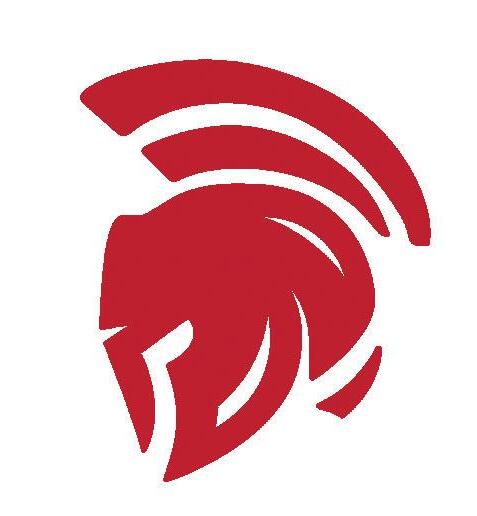
- Scarlett Cummings (‘24)
Vikings Titans
Seattle
vs










“The 49er Sourdough Sam mascot would beat the Seahawks because miners are always strong and he has a pickaxe.”
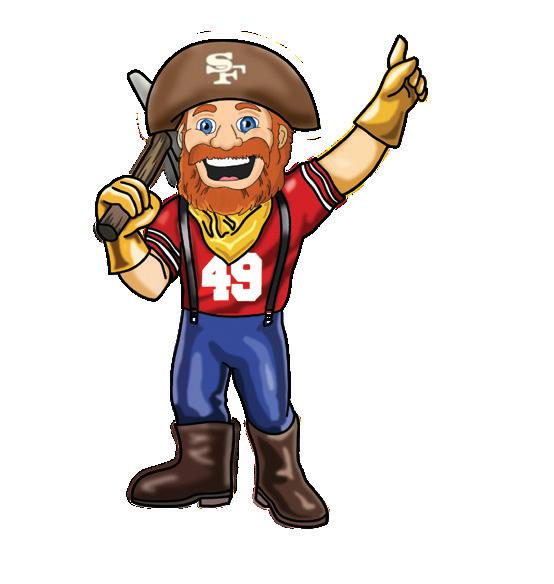
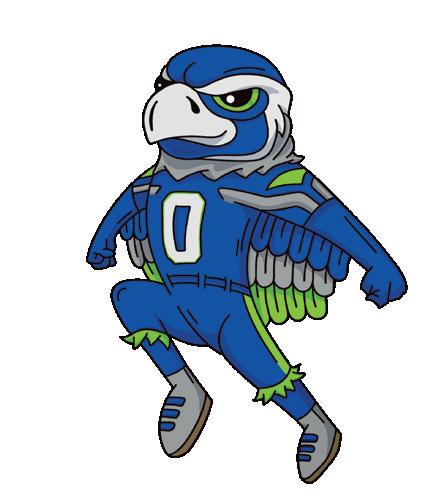
- Ry Ewen (‘23)
San Francisco 49ers Miner
“The Seahawk wouldn't even fight it would just fly away, also size wise the miner has a huge advantage.”









- Teacher Steven Gallagher Seahawk
 GUNN
GUNN
Watch Paly reactions to our Mascot Match Up in Vikes on Mini Mics! Scan the QR code below!

In this story, we explore the rivalries between major teams and ask Paly students about their thoughts on the mascots for each team. With the ultimate mascot matchup, only the best mascot will be left standing!

 by TYLER HARRISON, JOSIE VOGEL, and KATIE
by TYLER HARRISON, JOSIE VOGEL, and KATIE
YEN Chicago Bulls
DetRoIt PisTonS

"His high jump makes him look athletic and also his horns make him look like a strong fighter."
- Isai Pulido (‘23)
BenNy tHe BulL

Stanford Tree

“I wouldn’t chose a Tree to be my mascot, however, it is unique. Overall the tree is not an aggressive mascot.”

- Evie Kramer (‘23)
vs vs

“The Mighty Mighty Hooper’s best attribute I think is his name. It’s super catchy and his colors are super fun.”




- Miya Joshi ('24)
The Mighty Mighty Hooper
CAL


















“I think the Grizzly Bear has the advantage because a bear can climb the tree and win.”







- PE Teacher David Duran
Grizzly Bear
asCot
BYE TO BYE TO
by TYLER FRICK, LILY JEFFREY, and ABIGAIL KAREL
design by

In a world as complicated as the one we live in today, sports may seem like a simple part of life. They reflect some deep values of society: hard work, the attempted perfection of skills, the endless repetition of small movements and working towards a larger goal. Athletics reflect the emotion and competitiveness of our society, and the physical and emotional investment in something other than our own lives.
Football
However, on a smaller scale, when breaking down individual sport to individual sport – specifically on a gender basis – athletics become more complicated, paralleling other aspects of our culture. Specifically, the different values we place on men and women. While some sports reflect strength, physicality, and
aggression, others center around things like beauty, grace, and even a specific body image. Cultural precedents set hundreds of years ago between men and women are reflected in athletics and despite having progressed somewhat, reflective of our increasingly homogenized ideals between genders, the culture split in sports still reflects many discriminatory values of society. Many sports are divided by gender in terms of participation: there are female dominated sports and male dominated
sports. In many cases, there are major differences in how female versus male athletes are viewed, treated, and supported when joining sports dominated by the opposite gender. For women, the ability to join “boy” sports has improved over time, especially through the introduction of Title IX in Q1972. And for men, the consistent trend of encouraging “muscle” sports has continued into our contemporary “progressive” era with little encouragement or accessibility for those who want to join “girl” sports.


A sport that exemplifies the notion of “male dominance” and other male stereotypes is football. Created in 1823, it was largely based on a mix of rugby and soccer, with an emphasis on physicality, hard hitting force, and harming or injuring others as core outcomes of each play. In fact, the game existed for about 100 years before football helmets were even invented.
In the modern age, women trying

helmets weren’t a part of the game for over 100 years
Gender bias and inclusion in sports has improved tremendously over the years. Yet, it still is a major issue seen throughout sports at every level including here at Paly.
TYLER FRICK and JOSIE VOGEL
out for or joining a football team has become more common each year, mainly due to the increasingly positive attitude towards women joining these types of sports. In 2020, Vanderbilt kicker Sarah Fuller, broke boundaries and became the first woman to score in a collegiate football game. According to an article by the Business Insider, as enrollment for boys in football has declined (possibly due to rising safety concerns), more girls are playing football every year. According to NFL Operations, statistics show that 0.6% of football players in California are women, and 99.4% are men, as of the year 2018. This is an increase in female participation from 2008, where the percentage of California’s football players was 0.1% female, and 99.9% male. However, there are still currently no female tackle football teams in high schools around the U.S.
Similar positive attitudes towards this integration are seen here at Paly. While freshman Lara Saslow faced some criticism for her decision to join the JV football team as a kicker, the perspective of her peers was largely supportive and positive.
“Whenever I told one of my female friends that I was playing football they thought it was really cool,” Saslow said. “There were definitely [people] that told me that I couldn’t do it because of my size, but it was mostly positive reactions.”
But this positive attitude towards women in typically male-dominated sports hasn’t always been this way. Before the establishment of Title IX in 1972, most sports were seen as a “male” activity. Before Title IX, if women played any sports, they were usually seen as ‘girly’ and only played at an amateur level. They often played tennis, bowling or croquet as hobbies with friends, but never at a competitive level. Then, when IX passed, more female dominated sports were added to school athletics, and women were given more opportunities to play more diverse sports at a competitive level.
Despite adding equal gender opportunity, the act had little control over people’s opinions of women in sports. Many women who were among those taking advantage of Title IX claimed their spot in athletics, only to be labeled “gay” or “masculine,” and discouraged from joining.


In her recent memoir Good for a Girl, Laura Freshman, California cross coun-
try State Champion in 1998 and two time NCAA champion for Stanford track and field, outlines how despite the many strides this monumental act has made, sports still cater primarily to men and male bod- ies. According to the book, a 2016 study found that girls in the U.S. are “dropping out of sports at twice the rate of their male peers by age fourteen, and over half leave sports completely by age seventeen.” It also stated that the top six reasons identified for this were “differences in access, safety and transportation, social stigma as being tagged ‘gay,’ decreased quality of experience, cost, and lack of positive role models.”
Not only are many sports designed for men to play, many others are designed for men to watch. Female sports that get the most coverage are those that showcase –– and in some ways, sexualize –– female bodies through focusing largely on grace and appearance, values typically held as exemplary for women in the past. This is seen in sports like ice skating, dance, cheer, gymnastics, all typically female-dominated sports.
Dance, ice skating, and cheer, for example, are even scored with appearance in mind. Although there may not be a specific section for appearance

on the score sheets, it is still a huge factor in influencing – consciously or subconsciously – the judges’ decisions. Judges score depending on how coordinated the team is, how entertaining the routine is, the uniform, hair, smiles, and even actual features or bodies of the athletes.
One may argue that the most graceful and impressive dancers, skaters or cheerleaders are that way because of their athleticism. This is true; the most beautiful leaps and maneuvers are often the hardest and athletes in these sports must train for strength, flexibility and endurance to be able to complete their routines. Still, many fail to appreciate the countless hours of difficult practice that these routines require, instead appreciating them for their appearance. Because of the underselling of the athlete’s talents and emphasis on entertainment and appearance in scoring, the perception of typically feminine sports is undermined. Viewers focus on what the judge sees – who has the prettiest performance – and not necessarily on the strength, power, and accomplishments of the athletes in sport. Not only does this undervalue the achievement of the female majority of the sport, but it discourages many young male athletes from joining, either implicitly or explicitly.
Saslow commented on how many people undersell the difficulty of these typically feminine sports.
“A male dancer’s friends might
Girls in the U.S. are dropping out of sports at twice the rate of their male peers by age fourteen
hours of practice and work to perfect, however, there is an exceptionally stark difference between men’s and


women also do not compete in during the Olympics. Most women perform to music, and men don’t, playing further into the idea that women perform for entertainment, and converting a sport into an art for the pleasure of the viewer, and not the athlete.
Perhaps most tellingly, both have floor routines, but women have dance requirements as well as tumbling (men only have tumbling).
credit for their hard work. Gymnastics for both genders takes an extensive amount of strength and perseverance, as each event a gymnast competes in takes
of strength to perfect, and showcases their physicality instead of their grace. Similarly are the rings, which
This clearly shows there is a value placed on women’s athletics as entertainment instead of solely athleticism, which is typically the value placed on men’s sports.

Men are placed in events that showcase their body strength, and women in events that demonstrate their agility and grace.
This may cater to the more traditional positions of men and women, but it
 Former cheer athlete Ja’Meer Cooper (‘25) catches a pass for the Paly football team.
Former cheer athlete Ja’Meer Cooper (‘25) catches a pass for the Paly football team.
“A male dancer’s friends might think his sport is easy and doesn’t take much work until they learn how hard it really is”
- Lara Saslow (‘26)
36 | VIKING MAGAZINE | vikingsportsmag.com
Photo courtesy of Karen Ambrose Hickey
had been a gymnast for ten years, also felt like society labeled gymnastics as feminine and weak.
“I did gymnastics for about 10 years, and throughout that time I definitely felt a kind of embarrassment for participating in a sport that was typically associated with femininity,” Chakmakchi said. “When people would ask what sport I did, I felt like I had to justify myself doing gymnastics, and would try to make clear the difference between womens and mens gymnastics so that other boys wouldn’t think less of me.”
The labeling of a sport as “girly” dis courages male participation. Because of the fear of doing an “easy” “girl” sport, many male athletes are scared to join out of a fear of judgment and prejudice from peers. Many peo ple look past the hard work put into it and mostly see the performance aspects, which can diminish the athleticism of both male and female participants.
Sophomore Ja’Meer Cooper, a former cheerleader, experienced these discriminatory stereotypes when he performed.
“Oftentimes, people would call me “gay” or whatnot,” Cooper said. “But I didn’t really care because at the end of the day, I knew what I wanted out of cheer.”
Title IX has granted female athletes all
malize both genders’ participation in any athletic activity.

“I believe that women and men can have almost if not exactly the same athletic ability as each other, it’s about the work you put in,” Cooper said. “I think it needs to be normalized that both genders can do any sport they want to, without the judgment of peers.”
These stereotypes surrounding female/ male dominated sports cause the continuance of a divide in athletics due to gender. After over fifty years since the Title IX law was passed, gender stereotypes in athletics persist, despite agreement among athletes that gender equality in sports should be normalized.


“Don’t let a stereotype stop you from what you want to do,” Cooper said. “If it’s what you want to do, put your mind to it, don’t listen to what people have to say and just go at it.”
 JV kicker Lara Saslow (‘26) puts on her helmet, preparing to come into the game.
JV kicker Lara Saslow (‘26) puts on her helmet, preparing to come into the game.
“
“I think it needs to be normalized that both genders can do any sport they want to, without the judgment of peers”
-Ja’Meer Cooper (‘25)
@vikingsportsmag | APRIL 2023 | 37
Photo by Caleb Wong
VIKING TRIES
UNICYCLING
 by YASMIN FRIEDRICHOWITZ and BEAU REVENAUGH design by YASMIN FRIEDRICHOWITZ
by YASMIN FRIEDRICHOWITZ and BEAU REVENAUGH design by YASMIN FRIEDRICHOWITZ
While many Paly students ride on two wheels, or drive to school every day, one exception is senior Nathaniel Grinkrug; who rides a unicycle. First we dove into his background as well as unicycling’s challenges, and then we put them to the test and tried the unicycle ourselves.
hen most people started riding bikes, they had four wheels: the regular two and a training wheel on either side. Then, as balance and muscle memory improve, the training wheels were gradually removed and the apparatus became the, “normal,” twowheeled bi-cycle. But what if you or your parents hadn’t stopped there? What if they (or you) had just kept removing wheels?
Unlike some of our Viking staff members who attempted unicycling, Senior Nathaniel (Nati) Grinkrug, expert unicyclists, would have been just
There have been many strange transportation methods current and past Paly students have used to get to school, from electric shopping carts to a school desk with wheels and even walking on hands in stead of feet.
Compared to these, Grinkrug’s method of unicycling to class seems far more tame.



It all started when Grink rug chose to build a bicycle for his first JLS Con nections project, back in the first semester of sixth grade.
“I initially wanted to build a bike out of a bunch of parts, but that was kind of ex pensive, and so I decided to build a uni cycle,” Grinkrug said.

And after building the unicycle, the natural next step was learning to ride it. Grinkrug himself puts it best.
“Why would I have a unicycle if I can’t ride it?” He said.
Because of this, Grinkrug dedicat ed the winter break of sixth grade to learning and practicing the act of riding the unicycle. It took a lot of perseverance for him to learn how to unicycle. Just like a kid
learning how to walk, falling will be a common occurrence until the body learns to take over and it becomes sec ond nature.
“You really are not going to be able to get anywhere for the first few hours of trying,” Grinkrug said. “You’re just going to fall on your feet again and again until your body kind of figures it out. It’s pretty frustrating, but once you can persevere through that you really start to get some noticeable progress.” Once Grinkrug learned how to ride the unicycle, he began to take on new ways to ride it, challenging himself even more: how to ride with one foot, ride backwards, hop on one foot and do different types of
“Why would I have a unicycle if I can’t ride it?”
-Nati Grinkrug
skill, and more fun. Another plus is that he doesn’t have to lock his ride. After all, what thief would steal something they don’t known how to ride?
And, while it may not seem like it, unicycling is actually relatively safer than biking. The most common bike injuries are broken arms or concus sions; when bik on their arms or head. On the other hand, falling off a unicycle almost always has you landing on your feet. In all of Grinkrug’s years of riding, he has fallen on his feet every
Grinkrug explains to us that while a bicycle has multiple gears that allow the rider to pedal at a slower rate than the wheel is moving, the unicycle doesn’t have that same advantage. The unicycle wheel is fixed to the gears, which






means the pedals move with the wheels as you pedal. Basically, the larger the wheel, the faster you can go on the unicy cle, but the downside is that it is much hard er to get the unicycle moving. In order to not fall off, unicycle riders have to keep


the regular bicycle and the unicycle is the breaks: While most bikes have breaks, most unicycles don’t. Instead, the rider must use their legs to physically stop the pedals from rotating around. But, Grinkrug’s 29 inch unicycle does have a break un der the seat and learning how to use the break is challenging and has a steep learn ing curve. However, he makes sure to use it for his safety, espe cially when he goes under the Cal Ave Underpass.

“If you’re go ing downhill, and you’re going so fast that your calf muscles aren’t strong enough to apply the pressure, the break is necessary,” Grinkrug said.
For those who have only ridden regular bicycles, it is sim ilar to applying the brakes very gently, except unicyclers have to counterbal ance the force of the brake with their body weight. When this isn’t done cor rectly, the rider will fly forward off the bike and may or may not be able to fall onto their feet. We did not need to use the breaks when we tried unicycling. In fact, it was very easy for us to stop mov ing on our own...
“You’re just going to fall on your feet again and again until your body kind of figures it out.”
-Nati Grinkrug
LEARNING TO UNICYCLE
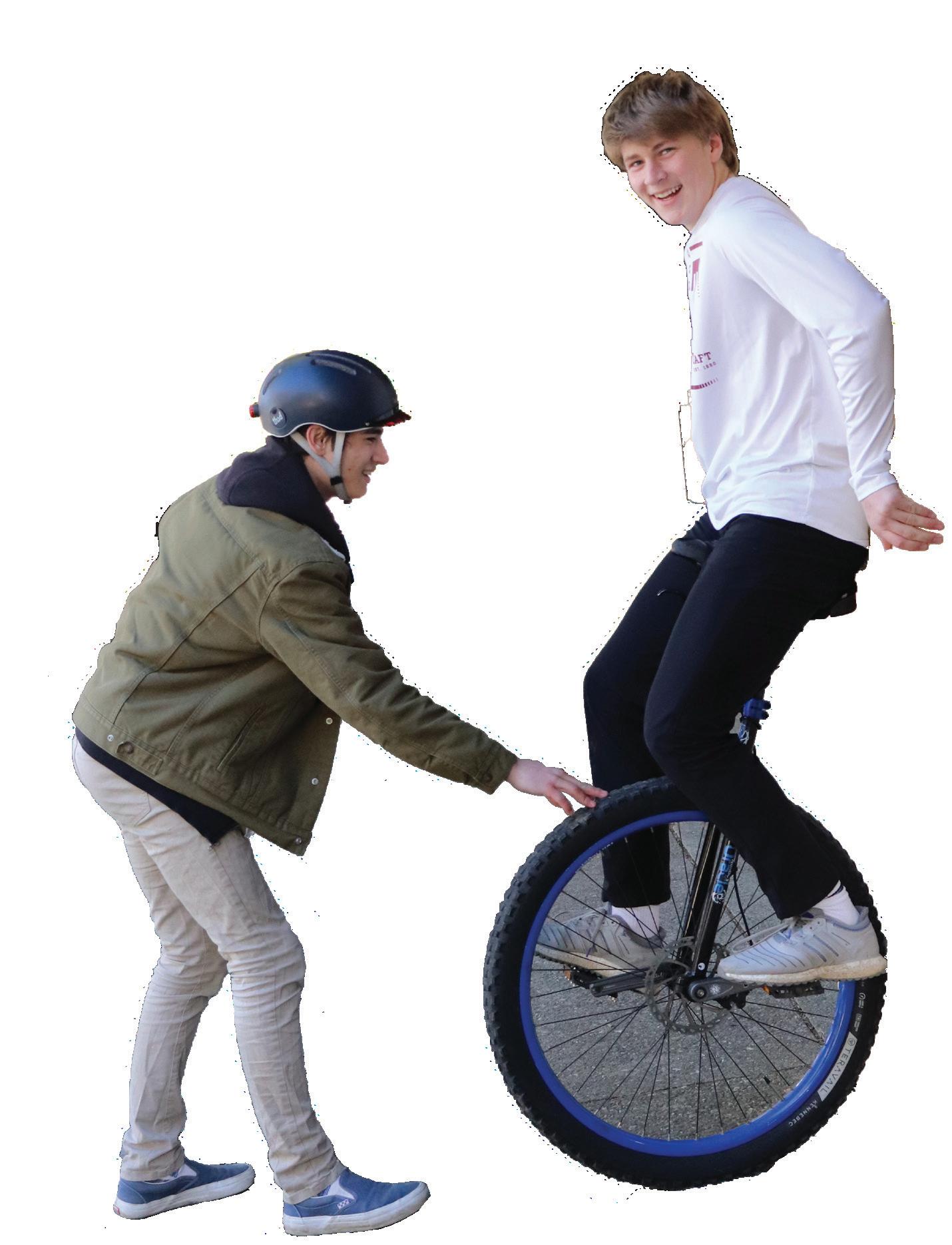 by: YASMIN FRIEDRICHOWITZ
by: YASMIN FRIEDRICHOWITZ
This is the “Viking Tries” aspect of the package! Here we outline our attempts at the one-wheeled apparatus more colloquially known as a unicycle. Other attempters be warned (it’s as hard as it looks).
Most regular people have never had the opportunity to ride a unicycle. Because of this, we on Viking wanted to give it a try and compare unicycling to something we are all very familiar with, biking. When we met up with Grinkrug after school, he gave us some tips and instructions to start us on our journey of riding the fabled one-wheeler.
“Free-mounting,” which is when you get on a unicycle without the help of a wall, or bench. This is much more advanced, especially with the 29-inch wheel that Grinkrug brought to school that day. Luckily, he had mercy on us and explained an easier mount:
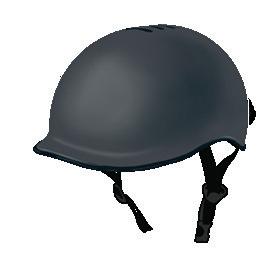



His instructions involved three “simple” steps (simple at least, in theory). Step one: line up the unicycle to the wall so that the pedals are parallel to the ground. Step two: roll out the unicycle and get between it and the wall with your non-dominant foot on the pedal. Step three: push down on the pedals and hoist yourself up onto the unicycle while holding on to the wall behind you. Being up on the seat of the unicy -
cle felt like you were really high up there and it felt terrifying to move in any direction. You had to commit to it; commit to pedaling or else you’ll fall off.
As much as I tried, and tried, and tried, I could only get half a pedal in before I fell off the unicycle. I fell backwards and forwards and couldn’t even make it past two feet away from the wall.

I mean, I knew it would be hard but dang! Grinkrug made it look so easy!

Unlike me, my fellow Viking member, Beau, was able to make a little more progress than myself. He even made it a couple of feet before falling off!
“It felt really scary being that high with nothing besides a wheel below me,” Reve naugh said, “Leaning for ward and being confident helped me ride it for a few seconds, and I think if I practice more I could be able to ride it.”
After a few tries of riding the unicycle Grinkrug comment ed on how impressive it was that Beau was able to get so far for it being his first time riding a unicycle.
“[Beau] did amaz ing for his first try, he rode the uni cycle for much longer than most people I’ve taught,” Grinkrug

said.
Despite Grinkrug making it look easy, Beau and I went into it knowing it was going to be very difficult. Unicycling completely met up to that expectation and we were not disappointed in any way. Even the so called simple steps of mounting were really impossible; I needed help the first two tries to even get up onto the unicycle, I couldn’t get a full pedal rotation around, and Beau,
“It felt really scary being that high with nothing besides a wheel below me.”
- Beau Revenaugh
HORSES! your

HOLD HORSES! HOLD
A deeper dive into the unique aspects of the sport of horseback riding through the eyes of three of Paly’s own equestrians.
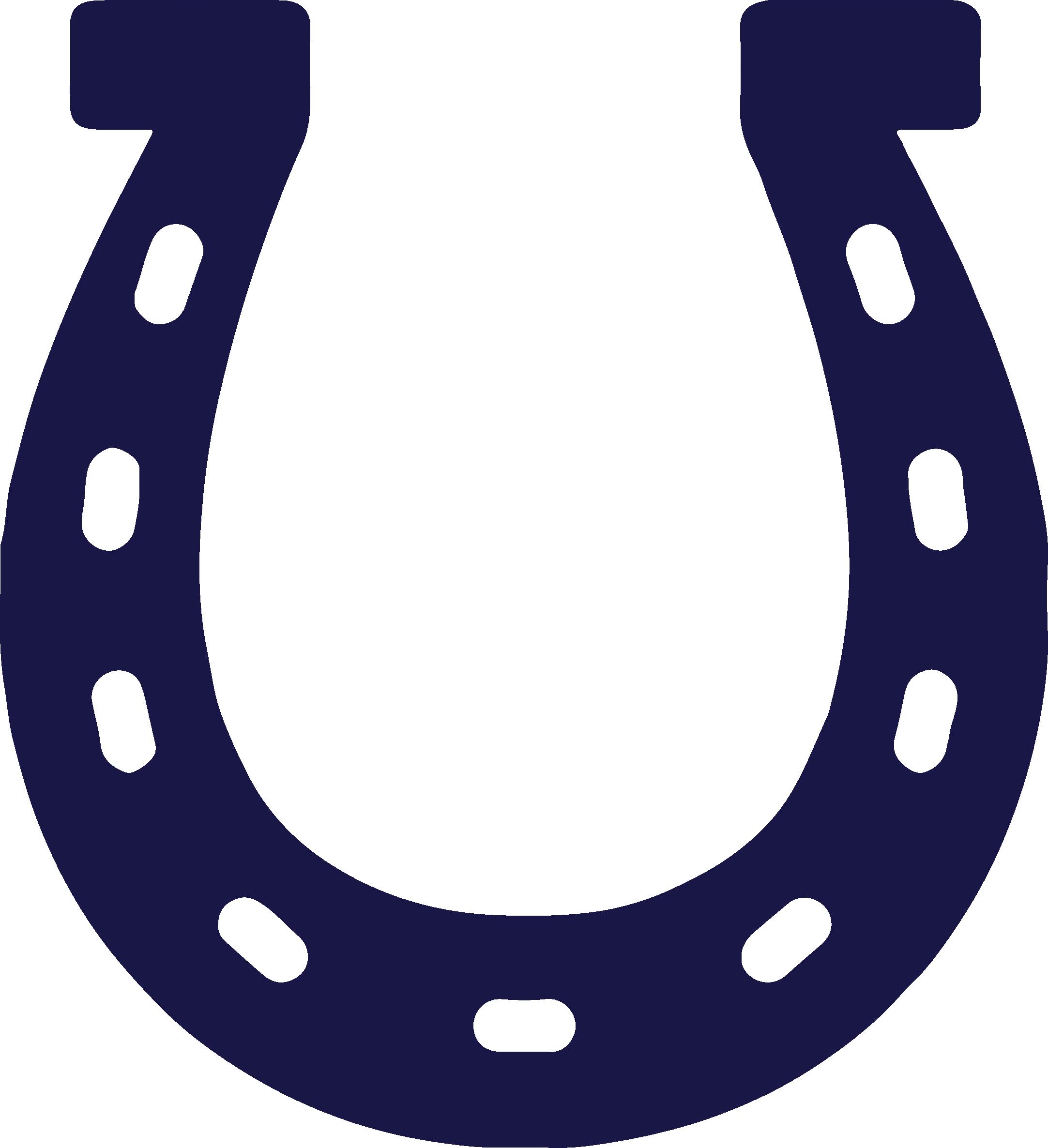 by CLAIRE CHO, ASHTON CHOW, and TAKUMI WEIMANN
by CLAIRE CHO, ASHTON CHOW, and TAKUMI WEIMANN


Before the world relied on cars, trains, and planes for transpor tation, the horse was the par amount form of travel. Horse back riding is thought to have originated around 3,500 BC in the Middle East. With above average power and stamina, hors es were the prime choice for warfare, transportation, and agricultural uses. Since then, horseback riding has progressed and evolved significantly. The invention of equipment like the bridle and bit around 1000 BCE, which attached to the horse’s mouth, allowed for riders to have better control of the horse. Addition ally, the invention of the saddle around 800 BCE gave riders in creased support, comfort, and control over the horse in compari son to riding bareback, or without a saddle.
While horses are rarely used as a form of transportation today, the sport of horseback riding is still widely practiced, and our community is no exception.
Palo Alto High School sopho

Gonzalez-Bondolowski is one of the countless horseback riders who, over the years, has developed a love for the sport.
“I like that it’s individual and not very predictable like other sports can be, and you’re with an animal, which can be exciting and fun,” Gonzalez-Bondolowski said.


While there are those like Gonzalez-Bondolowski who, since a young age, have dedicated all their time to riding, others participated in a wide array of sports before settling on equestrianism. Paly alumn Rachel Vonderhaar is one of these people, but despite starting later, she has stuck with horseback riding past high school and throughout her collegiate career.
“I have played just about every sport that there is, and there’s nothing quite addicting like the feeling of eventing,” Vonderhaar said. “It gives me the biggest adrenaline rush I’ve ever felt… it is extremely rewarding.”
While riders like Gonzalez-Bondolowski and Vonderhaar are passionate about their sport of horseback riding, there are a few barriers that could prevent potential riders from taking up the sport. The

most notable barrier is the high cost of horseback riding. The sport ranks as one of the most expensive sports to take part in for teens, with an average annual cost of over $11,000 for consistent riders.
Freya Mcquarrie, a Paly sophomore and avid horseback rider explains the difficulties in being able to participate in horseback riding.
“You don’t have constant access to the horse and riding fa cilities, and when you do it costs lot of mon ey,” Mc quarrie said. Many factors can be attributed to the high cost of the sport which include leas ing a horse, maintaining the horse, partaking in lessons, and buying additional equipment. A typical horseback riding lesson ranges from 30-60 minutes and can range anywhere from $40 to $200 depending on which stable the lesson is
taken at.
For many people, the cost of horseback riding alone is enough of a reason not to try or take up the sport. When compared to popular team sports like soccer or basketball, or even other individual sports like running, horseback riding costs considerably more. But why is it so expensive?



The simple answer is that managing a stable or farm is expensive. Horses are large animals that require plentiful space to roam as well as proper bedding, food, and veterinary care in order to maintain their health.
Horses consume a substantial amount of food, approximately 1.5-2.5% of their body weight, and consequently produce waste that has to be cleaned up by workers. Health care for horses consists of vaccinations, check-ups, horseshoe maintenance, dental treatment, and other expenses. Additionally, stables and

42 | VIKING MAGAZINE | vikingsportsmag.com
Photo Courtesy of Helena Gonzalez-Bondolowski
farms have to invest in equipment such as saddles, bridles, bits, and blankets; all necessary equipment for equestrians.

When the cost of food, health care, and equipment is paired with high util ity and insurance costs for the horse, it becomes much more un derstandable why the cost of horseback riding is so high. Horseback riding es sentially entails caring for two athletes: the person and the horse, and the high cost reflects this.

Due to the cost of the sport, mon ey-oriented stereotypes about horseback riders have developed. A common stereotype is that horseback riders are very rich and spoiled. Another stereotype about horseback riding is that the sport is not that difficult.
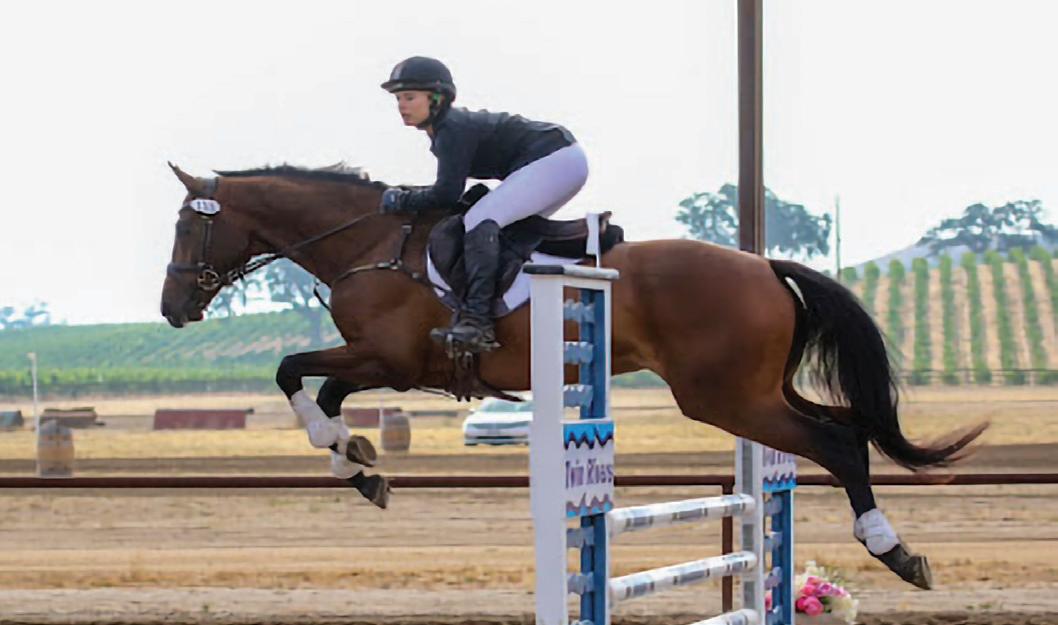
“Just like any other sport, you can’t really see what it’s like from the outside,” Gonzalez-Bondolowski said. “I think a lot of people just assume that it’s so easy… that you just sit there and the horse does everything.”

What many don’t understand is that just because it doesn’t require as much human physical exertion, it doesn’t make it easier to train and perform for, just different.
“A lot of people don’t understand the sport because it’s not widely known,” Vonderhaar said. “When I was in high school, I really didn’t like explaining riding to people because it felt so undervalued to even try, compared to what it really was and felt like.”

Mcquarrie agrees, noting the difficulty in trying to make people understand the complexities of being an equestrian.
“It’s often said that the horse does a lot of the work while we just sit there which may seem like it to people who aren’t very familiar with how horseback riding works,” Mcquarrie said.
The truth, however, is that horseback riding is far more complex than outsiders assume and these stereotypes can diminish the respect and beauty that outsiders may feel for the sport.
To those who do it, horseback riding is the most thrilling and unique sport
in the world. While most other sports utilize inanimate objects like a bat or a ball to demonstrate athletic prowess, horseback riding champions the physical beauty and strength of another living animal. The uniqueness of horseback riding involving a live animal, essentially, another athlete, means that it requires much more than just skill.
A hugely important part of riding is the connection between the human and the horse. In horseback riding, much like other team sports, these two are teammates and must have each other’s back.
However, creating the connections with these gentle animals is not as easy as it may seem. Horses, like humans, have emotions; they can be timid, easily startled, and apprehensive. Gonzalez-Bondolowski’s horse is no exception.
“Our bond is not super strong because Colton is very grumpy and old, and doesn’t really like people,” Gonzalez-Bondolowski said. “However, I would say we’ve definitely built a connection over the past six months.”

Spending quality time and demonstrating care for a horse is one of the best ways to form and maintain the bond. “I had a favorite horse named Morty,” said Vonderhaar. “I started leasing him when he was four, during my senior year of high school.”
Sometimes, a rider’s favorite horse isn’t based on accomplishment in competitions, but instead, the moments of tenderness and learning are what make it a true champion.
“Morty was not the horse I took the highest, but he was the horse that I accomplished the most with,” Vonderhaar said. “With him, I became a much better rider and person, and he
taught me so much about being patient. Not every day was perfect, and we had our bad days, but he really taught me resilience and to learn to appreciate every little accomplishment.”
Likewise important to understand is that horses, like humans, differ from individual to individual. Some are more trusting and friendly while others can be more shy or aggressive. Much of a horses’ personality is derived from how they are raised. Some untrusting horses come from a background of abuse, trauma, and have not been treated well. They may learn bad habits so that they can get out of certain situations and avoid the pain from trainers. On the other hand, a well-ridden horse who has been treated well by humans will most likely be friendly and trusting.
In the end, though, the individuality of each horse adds another layer of challenge to the hurdle of bonding with a horse: there is no formula and each animal must be treated differently.

Thus, horseback riding is not just a sum of the dollar signs behind the equipment, lessons and gear. It is hours of dedicated practice and technique work. Days of training muscle memory for form and position.
And, most importantly, the sport of horseback riding is the sum of thousands of small acts that strengthen the bond between the athlete and one of the strongest, most beautiful, most unique animals on the planet. Horseback riding, unlike any other sport, represents the precious bond between human and animal.
@vikingsportsmag | APRIL 2023 | 43
Photo Courtesy of Rachel Vonderhaar
As Vikings, we display our spirit in every way possible; some teams choose to participate in dress up days to get hyped for their games. Here’s a look at some of the best game day dress ups.
 by SIRISHA MITRA,
by SIRISHA MITRA,



- Girls Volleyball






 AVERY RELLER, and JJ STOEN art by AVERY RELLER
AVERY RELLER, and JJ STOEN art by AVERY RELLER
“I love seeing my teammates spirited and as excited as I am to play, which is super important when it comes to a good game outcome”
- Scarlett Cummings (‘24)
Tank Tops - Boys Swimming
Photo courtesy of Oliver Rasmussen (‘25)
Photo courtesy of Rachel Ellison (‘22) Jerseys
“I thought it was fun to see how far each teammate would go with their outfits and how it made everyone laugh and have more fun at each meet”
44 | VIKING MAGAZINE | vikingsportsmag.com
- Oliver Rasmussen (‘25)
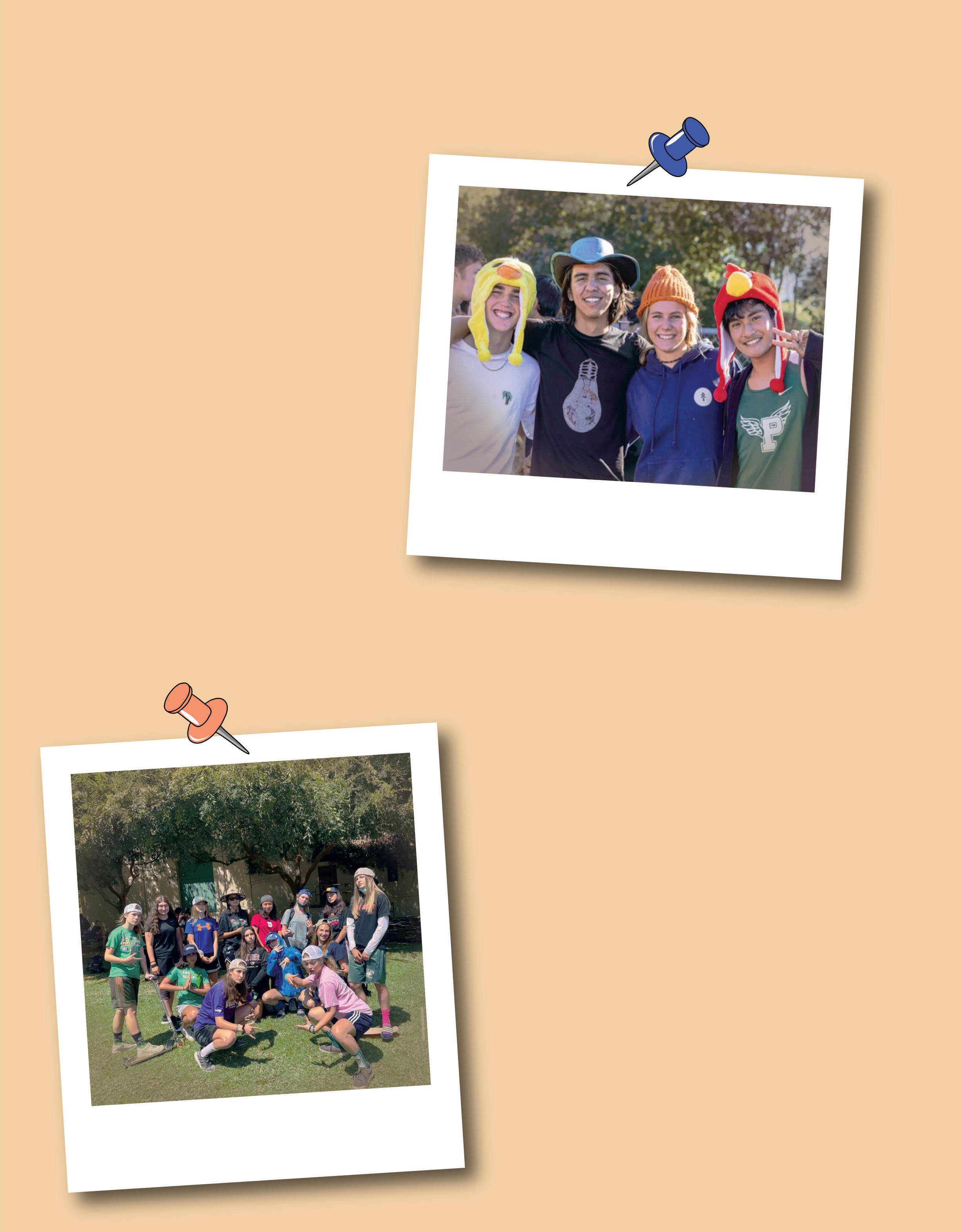















“Since we don’t typically get to dress up for these days it was fun to come to practice and see everyone in their hats”
- Elizabeth Fetter (‘23)
- Polina van Hulsen (‘25)
Photo courtesy of Kellyn Scheel (‘23)
Frat Bros - Field Hockey
Photo courtesy of Elizabeth Fetter (‘23)
@vikingsportsmag | APRIL 2023 | 45
Crazy Hats - Cross Country
THE FINAL WORD:
by ELIZABETH FETTER and JJ STOEN
Two sta writers take on a contentious question: mascots. is special edition of “ e Final Word” showcases two di erent opinions on the ethics, image, and history of Palo Alto High School’s. e column on the le is written by our usual JJ Stoen and argues for keeping the Viking as it is. e column on the right is written by a guest, EIC Elizabeth Fetter, and advocates for a few changes to Paly’s gurehead.
Since 1929, the mascot of Palo Alto High School has been the Viking. While there isn’t much backstory to this name, the Palo Alto Viking name has been an unchanging staple to athletics and academics for decades. However, many question the meaning of the Viking mascot and while some valid points are present, it would just be far too difficult to launch a name change.

Top opponents to the Viking name call the mascot meaningless, as Vikings have no correlation with Palo Alto. They also slam the Viking mascot for being unrepresentative of what Paly is, as the vikings were famous for raiding towns in ruthless fashion. They ask “why would we want these savages to represent our school?”. While these ideas raise some relevant points, the Viking has simply been around for too long to change.
The iconic Viking has been posted and immortalized all around campus (the football field being the most famous example), across our school’s websites, and even takes the title of our magazine
and website. With such a legacy, it would take years, even decades to get used to a rebrand, not to mention the copious amounts of time and money that would be required to put into the name change. Also, while Vikings may have been brutal warriors, I would argue that it is the relentless fighting spirit of the Viking that Paly has adopted over the years. The name Viking has aroused fear in the hearts of our com petitors for decades now, much as the real vikings did during their conquest of Europe in the Middle Ages. Instead of looking at the negative traits that the vikings held, why not praise the positives in order to glorify our school a little bit?
In addition, the chant “Sko Vikes” is instantly recognizable, with all Paly athletic teams adopting it as their official cheer before and during games. Often led by Superfan Dan, this cheer is simply a fun way to bring everyone together in support of our beloved school which has been present for years. The motto “one ship” represents the bonds between members of our Paly student body and staff, illustrating that we’re all in this together (High School Musical reference).
Another aspect of the Viking that has been im-
mortalized is the collection of the athletes who wore the Viking uniform. When we think of our most famous athletes that came through this school such as Davante Adams, Joc Pederson, and Jeremy Lin, we instantly associate them with the Viking name. The athletes following in their footsteps have an opportunity to carry on their legacies in the Viking uniform, and changing the mascot would sever any chance of carrying on a Viking legacy. There is simply too much dominance and too much tradition held by the Viking name to break it.
In conclusion, it all comes down to the people who represent the name. Even if the name gets changed somewhere down the line, I’m quite sure that if you ask anyone who came through Palo Alto High School, they will be proud to say that they were a Viking, they will be remembered as a Viking, and they will forever be a Viking.
46 | VIKING MAGAZINE | vikingsportsmag.com
It all comes down to the people who represent the Viking name.
MASCOT MATTER
design by ELIZABETH FETTER and YASMIN FRIEDRICHOWITZ
The Oxford language dictionary defines “Vikings” as “any of the Scandinavian seafaring pirates and traders who raided and settled in many parts of northwestern Europe in the 8th–11th centuries.” Some may argue that having this as our figurehead, especially for athletics, is what we want. As “Paly Vikings,” we want to show other sports teams unparalleled determination, aggression, and ferocity in the pool, across the fields, or on the track.
But I remind these individuals that the Viking represents Paly in more than sports. It is supposed to represent who we are as a community, who we are as individuals, and who we are as people. Does the Viking do this? While the answer might initially seem to be a resounding “no,” the holistic answer is more complex than that.
Despite these violent attributes, according to a National Geographic article, Vikings also embody a slew of positive values: they were tightly-knit groups of individuals with a strong set of shared beliefs and values, they cared for one another, they aboded by a set of concrete “laws” –– although admittedly perverse by modern standards.
Because of this mixed history, the positive and negative sides of the Viking needs to be acknowledged and readily discussed but do not necessarily merit the re-branding of our school.
What does need to be changed, though, is how we depict the Viking. The white, blond, male figure that reinforces the white, male paradigm of athletics and academia, is the surface-level impression others get of Paly. As explained in our article “Saying Bye to Bias,” sports have been a historically male-dominated sphere. Sports were a way for men
to show their “aggression” and “fierceness.” Only with the creation of Title IX in 1972 were women given “equal” opportunities in athletics. And, despite the strides made, we still have a long way to go, both for men who want to explore more “female-dominated” sports, and for women searching for their place in athletics – a world still overly inhabited by men. And, having a white, male viking as our mascot reinforces the notion that sports are for only one group.
Although the viking mascot aptly characterizes an aggression and ferocity Paly wants to bring to athletics, why don’t we diversify its image? Why can’t we have a female Viking? Or a Viking that isn’t white? While critics might point out that our Viking mascot is white and a man because (duh, Elizabeth) Vikings were white. And Male. Well, although many were, some actually were not.
The aforementioned National Geographic article notes that Vikings were mixed individuals due to their far globe-fairing adventures, with new DNA evidence showing that they may come from a diverse array of places, from Europe to Asia. The new DNA evidence also shows scientists and anthropologists the increasing likelihood of female Viking warriors, according to History.com. David Zori, an assistant professor in history and archaeology at the University of Baylor notes that “we are starting to think
of the Vikings as less like a group of barrel-chested, blond-haired, bearded men that all looked the same.”
Despite the empirical evidence supporting a diverse Viking, we can actually leapfrog any debate about that discussion through an easier solution: de-personification. In fact, Paly has already moved toward this, with our use of a ship or a Viking helmet instead of an actual person.
By removing the person from our mascot and using an object instead, we keep what makes the Viking mascot so iconic: its simplicity and its memorability. What would Paly be without out “one ship” motto that sticks in people’s minds? What would we be without the “sko vikes” chant that echoes in our ears?
So, instead of viewing the Vikings through a presentist lens and doing away with it completely, we should accept their mixed history. However, if we want to keep a person-figure as our mascot, we should adjust its image by moving towards a more diverse (and accurate!) depiction of the Viking, or we should de-personify it completely. Either proposition keeps what makes the Viking so iconic but alters it to better represent what Paly wants to be: a diverse, dedicated, fiercely devoted group of students.
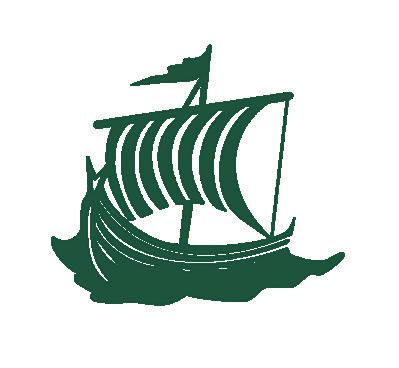
We are starting to think of the Vikings less like a group of barrel chested, blond-haired, bearded men that all looked the same."
“ @vikingsportsmag | APRIL 2023 | 47
-Historian David Zori
PALO ALTO UNIFIED SCHOOL DISTRICT
PALO ALTO HIGH SCHOOL

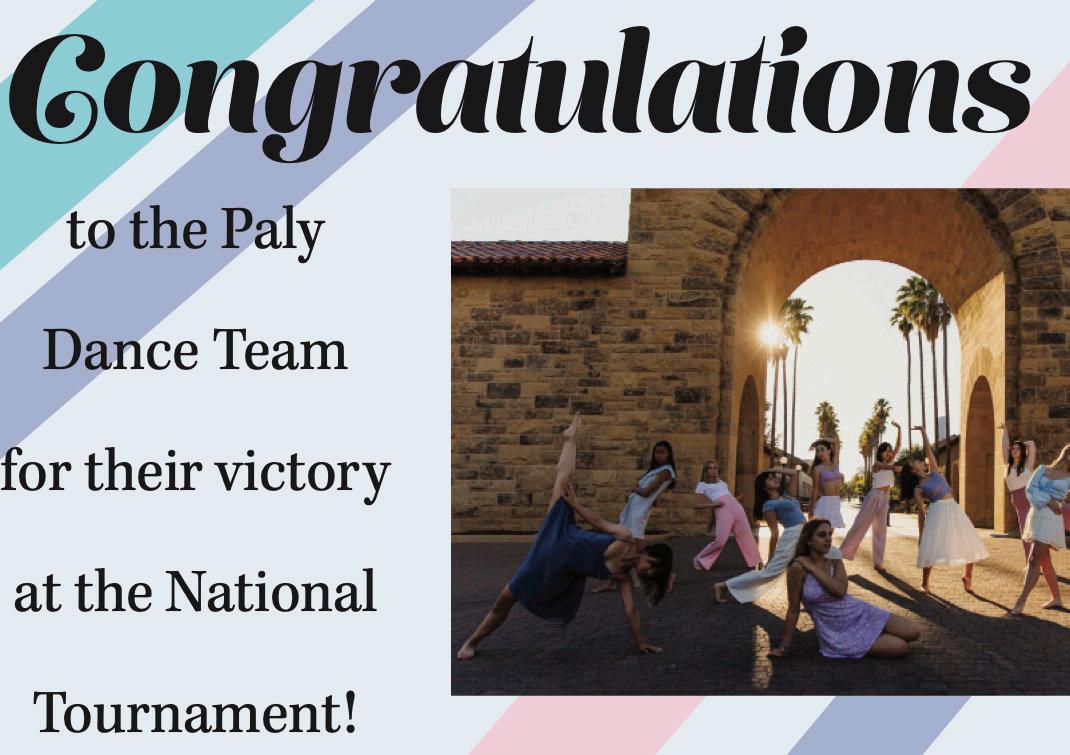
50 EMBARCADERO ROAD
PALO ALTO, CALIFORNIA 94301



Non-pro t Org. U.S. POSTAGE PAID PALO ALTO, CA Permit #44
vikingsportsmag.com












 Photo by Caleb Wong
Photo by Caleb Wong






































































 GUNN
GUNN

 by TYLER HARRISON, JOSIE VOGEL, and KATIE
by TYLER HARRISON, JOSIE VOGEL, and KATIE




























 Former cheer athlete Ja’Meer Cooper (‘25) catches a pass for the Paly football team.
Former cheer athlete Ja’Meer Cooper (‘25) catches a pass for the Paly football team.


 by YASMIN FRIEDRICHOWITZ and BEAU REVENAUGH design by YASMIN FRIEDRICHOWITZ
by YASMIN FRIEDRICHOWITZ and BEAU REVENAUGH design by YASMIN FRIEDRICHOWITZ









 by: YASMIN FRIEDRICHOWITZ
by: YASMIN FRIEDRICHOWITZ







 by CLAIRE CHO, ASHTON CHOW, and TAKUMI WEIMANN
by CLAIRE CHO, ASHTON CHOW, and TAKUMI WEIMANN










 by SIRISHA MITRA,
by SIRISHA MITRA,








 AVERY RELLER, and JJ STOEN art by AVERY RELLER
AVERY RELLER, and JJ STOEN art by AVERY RELLER






























